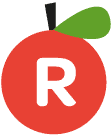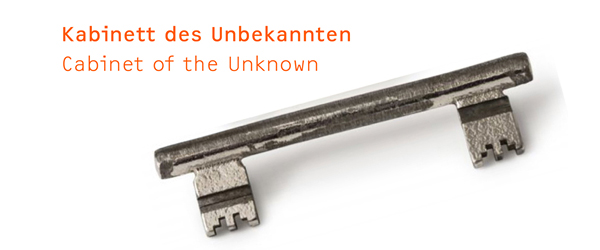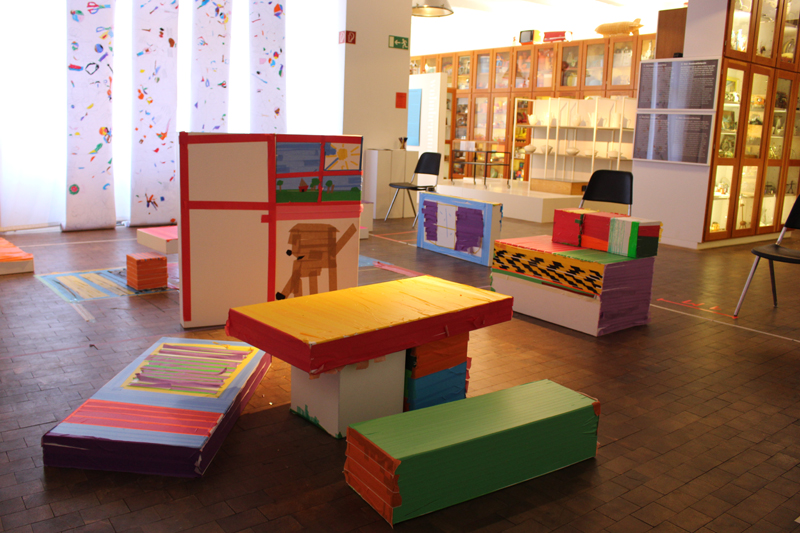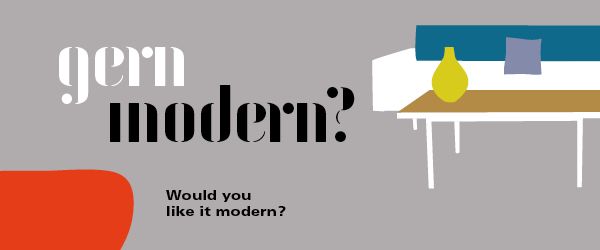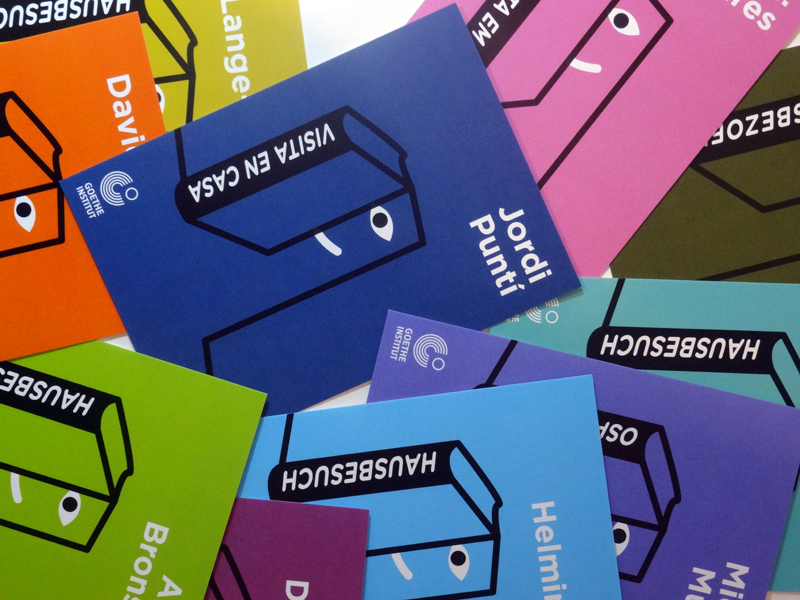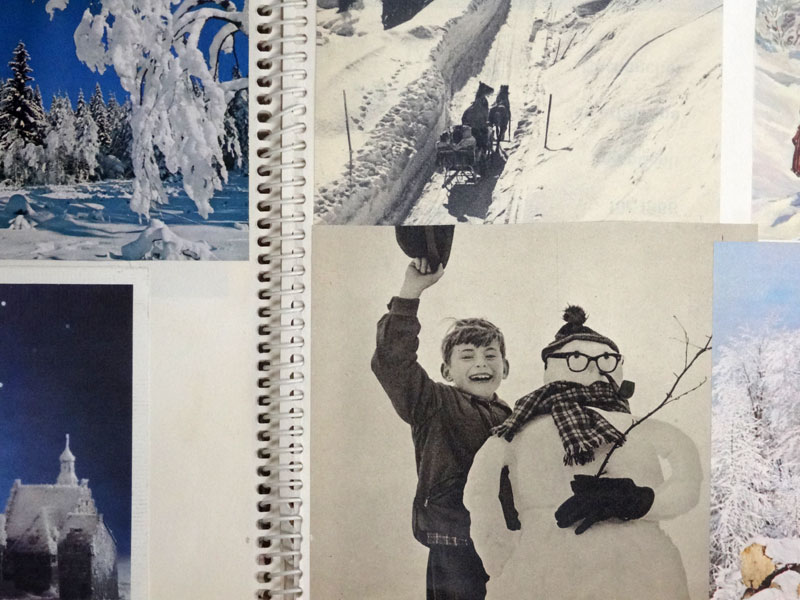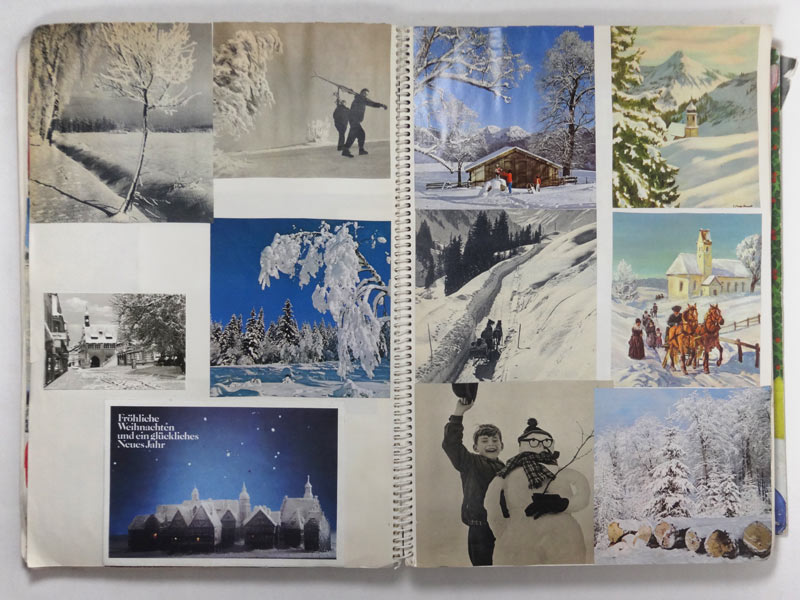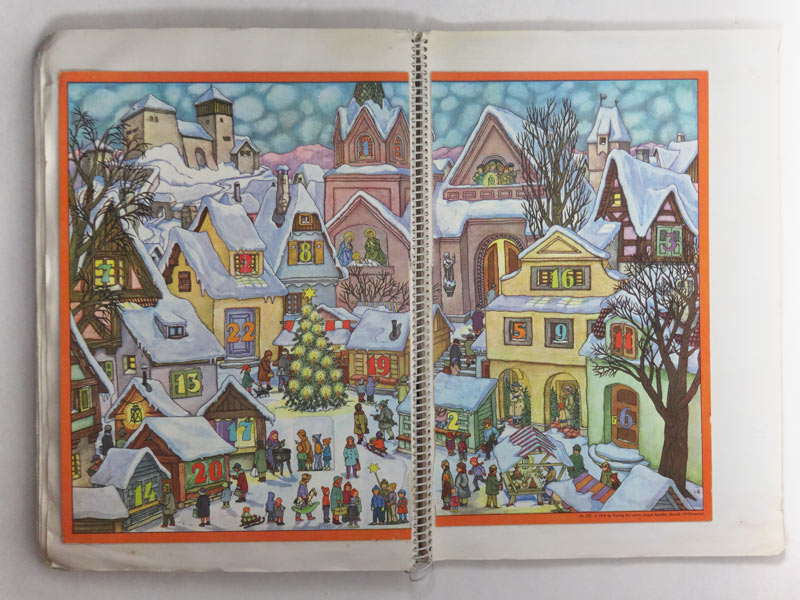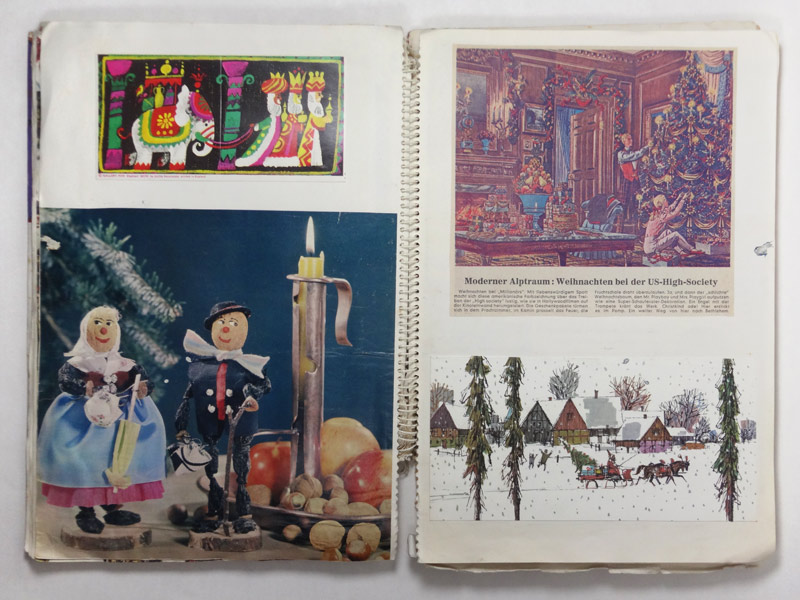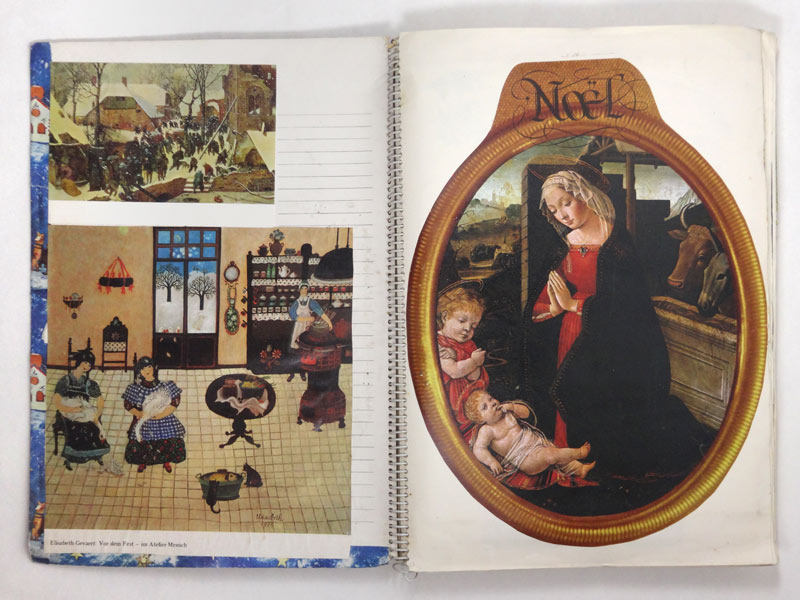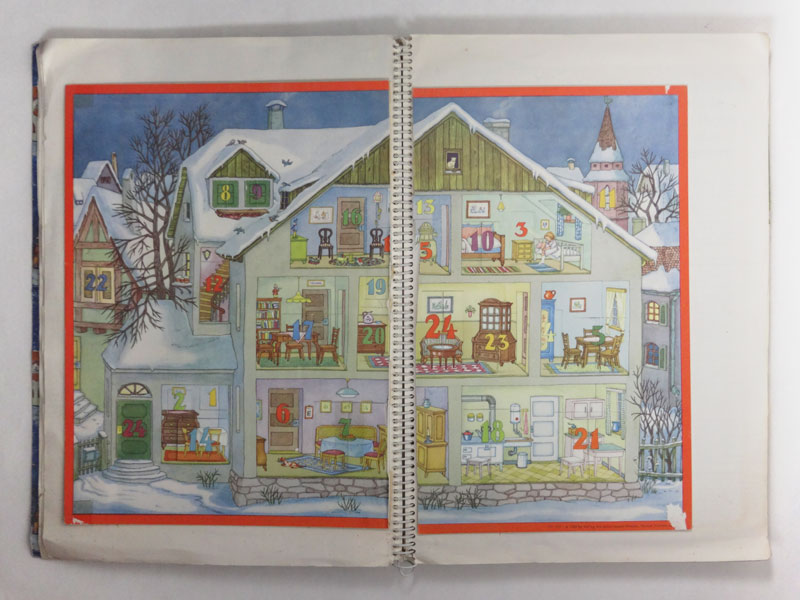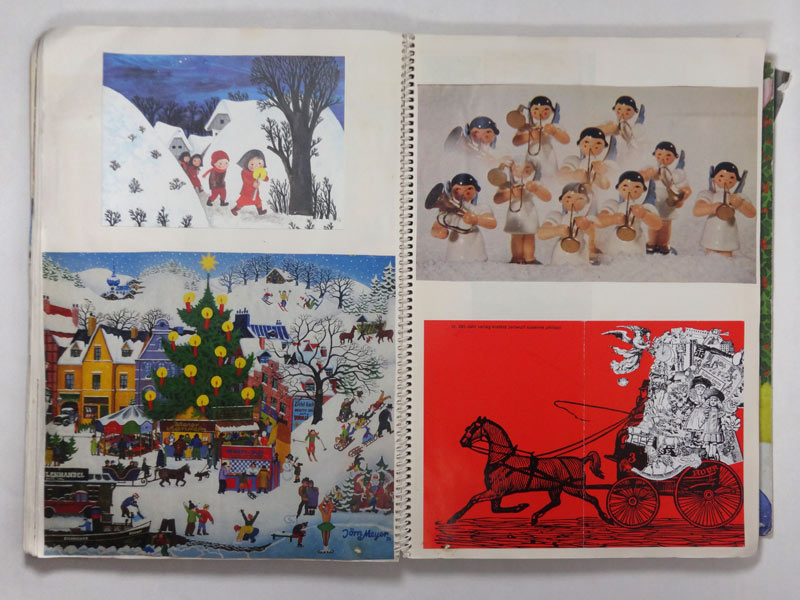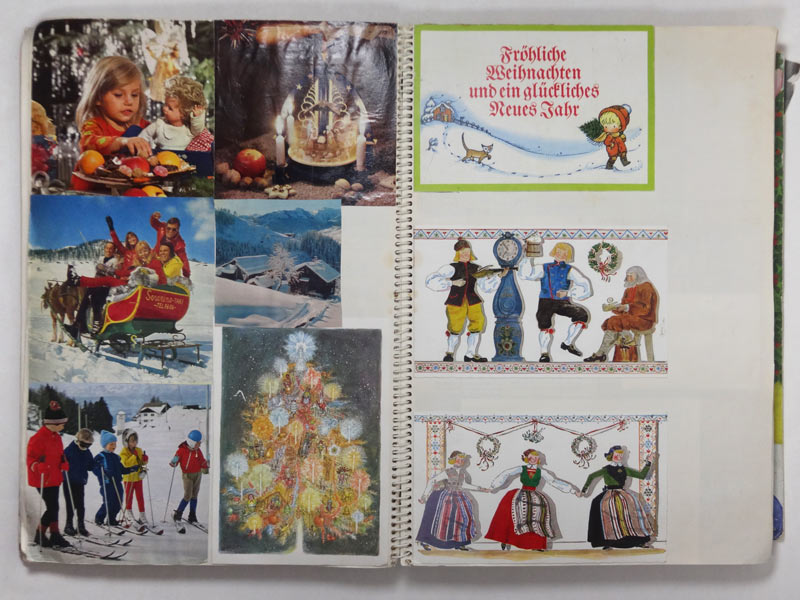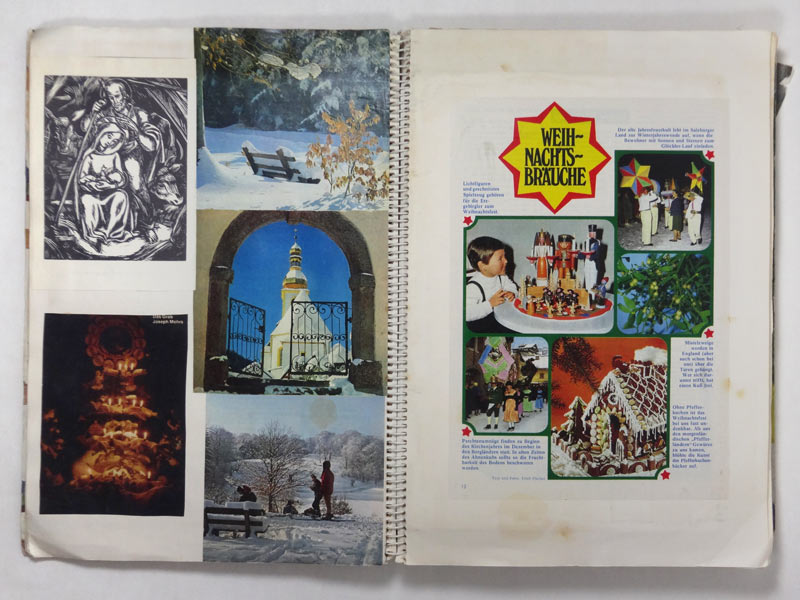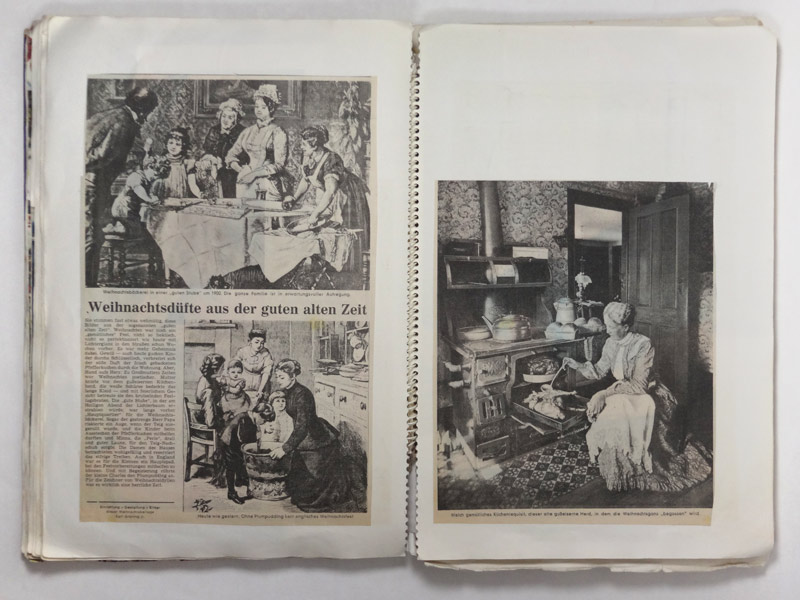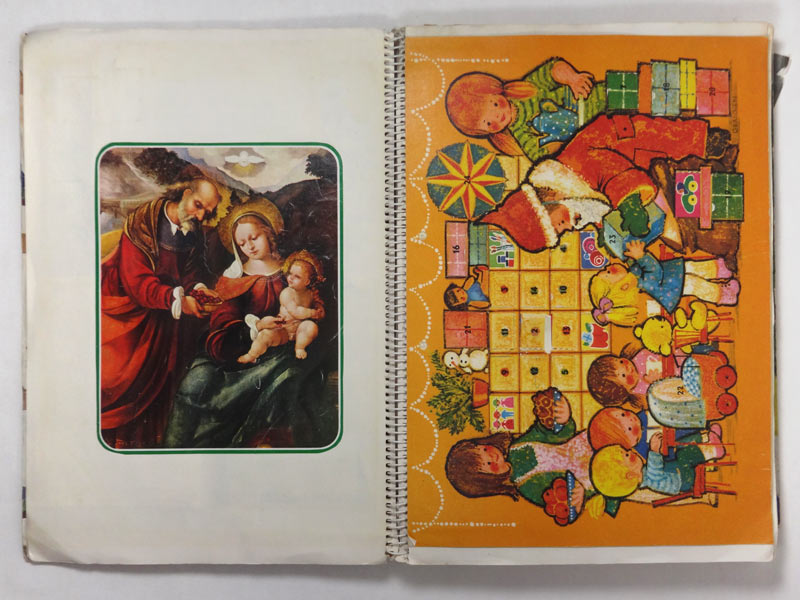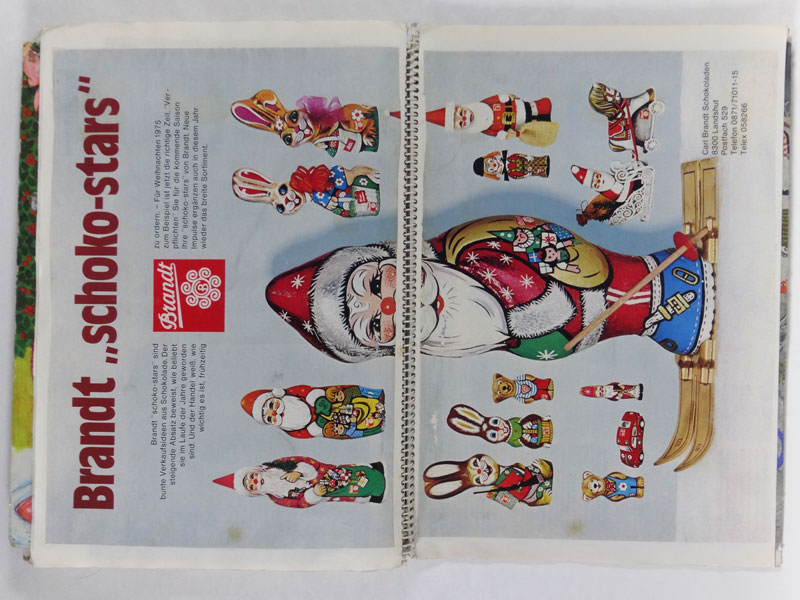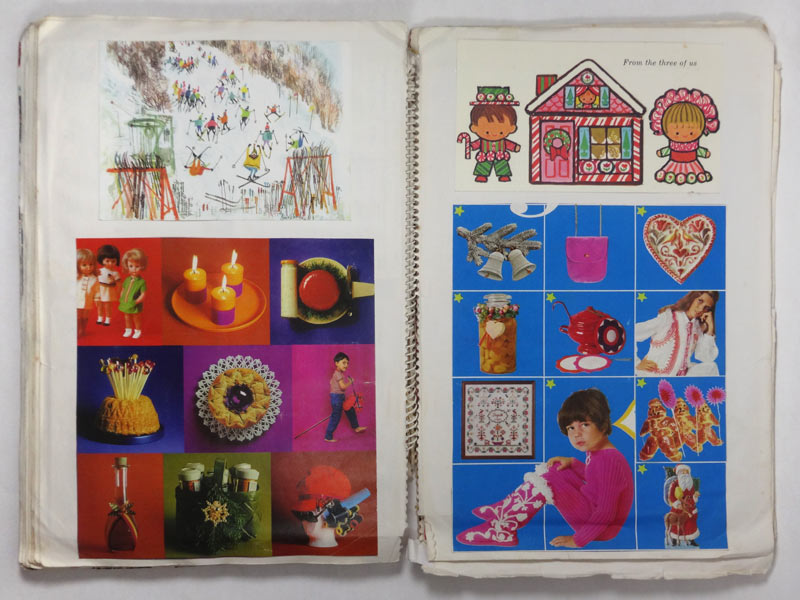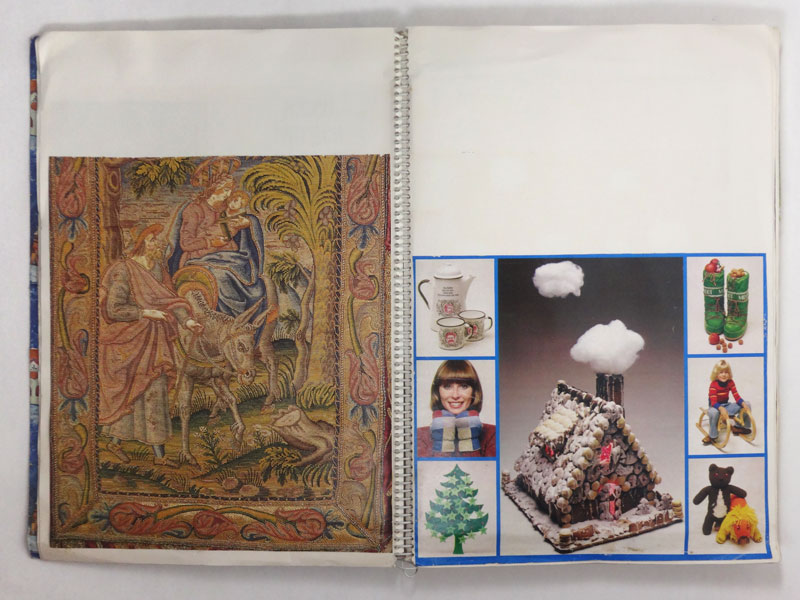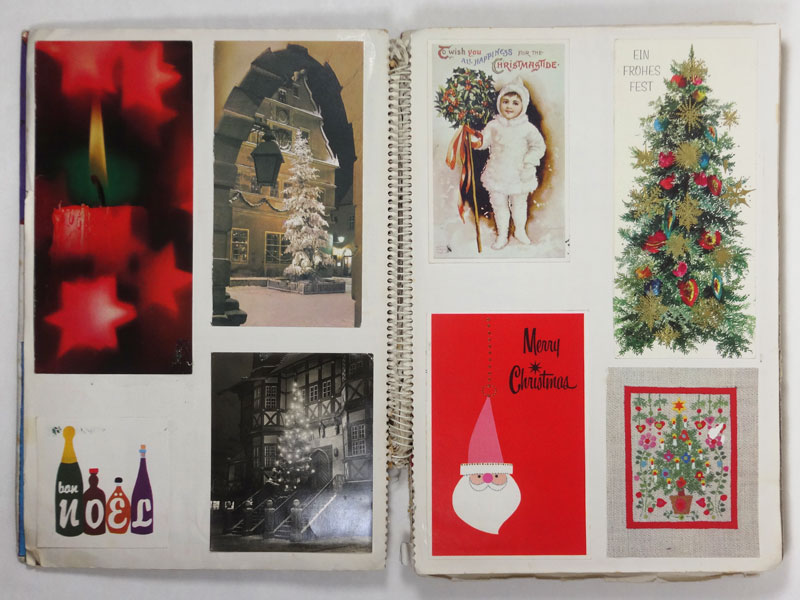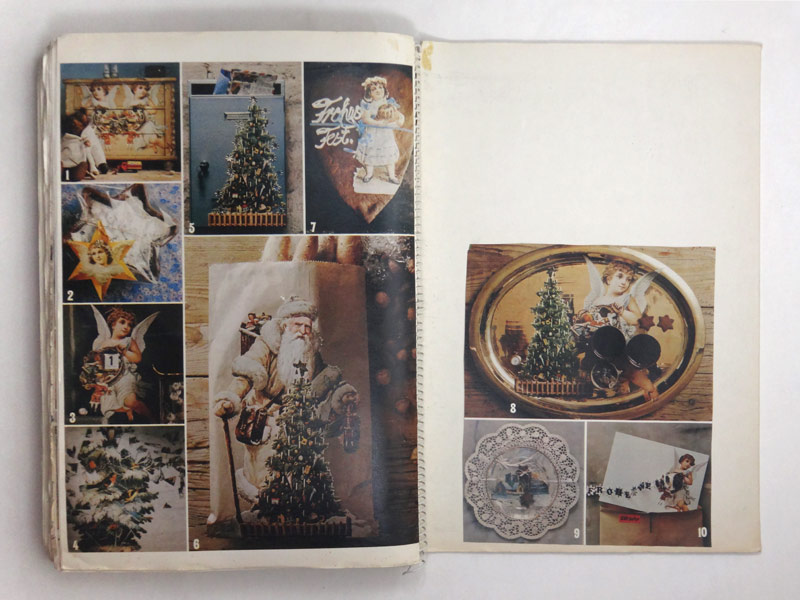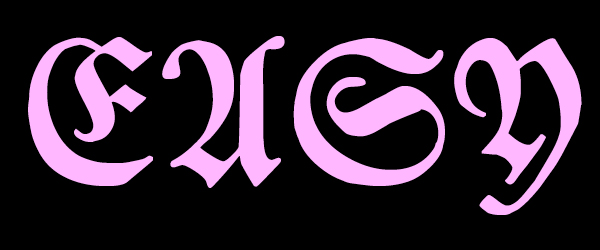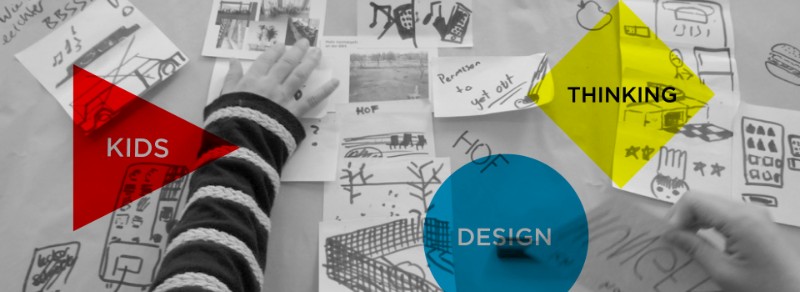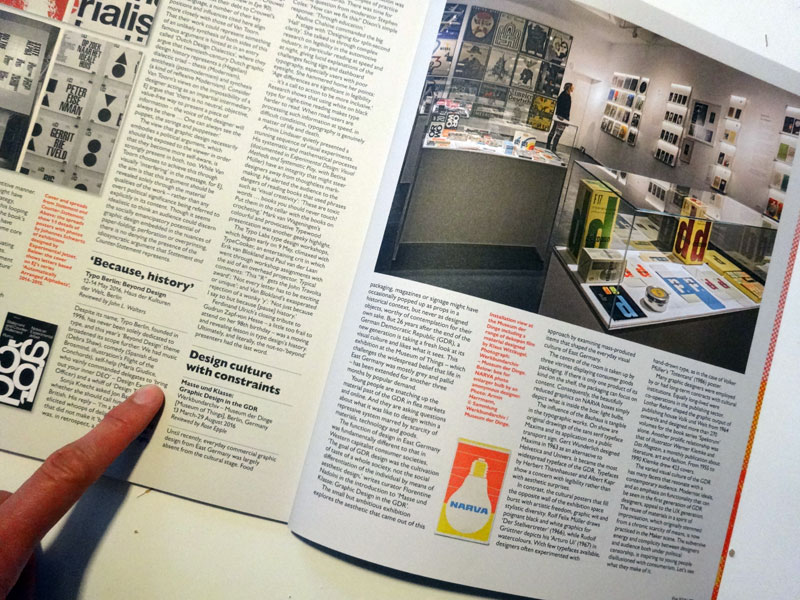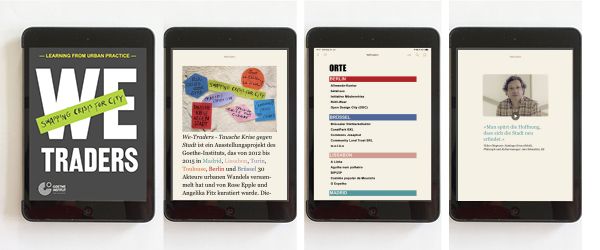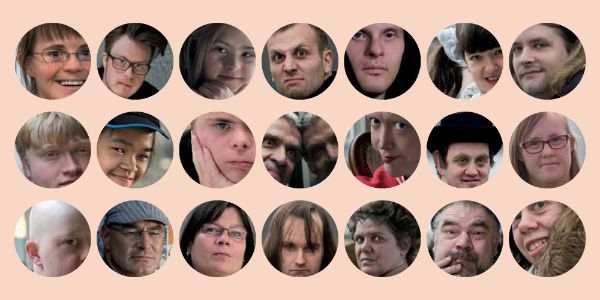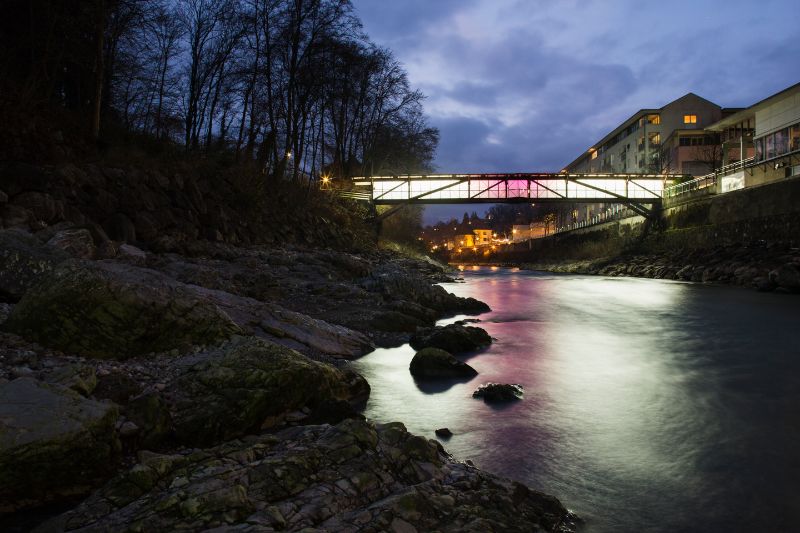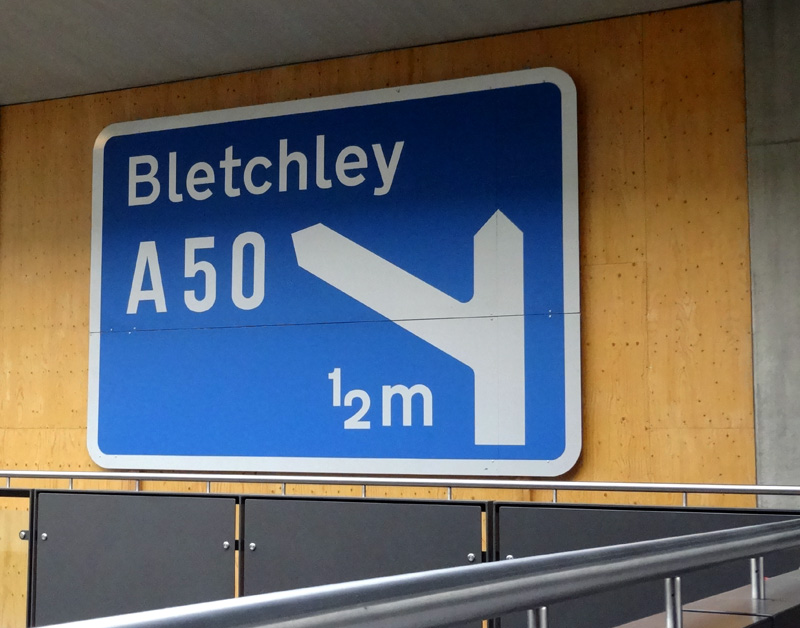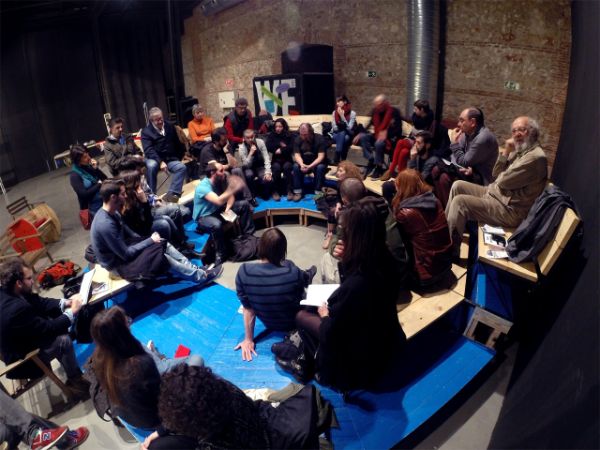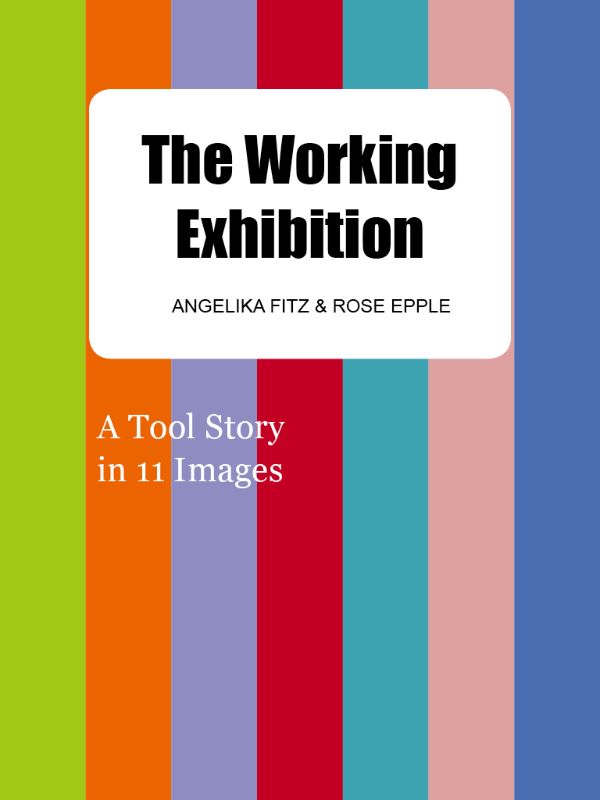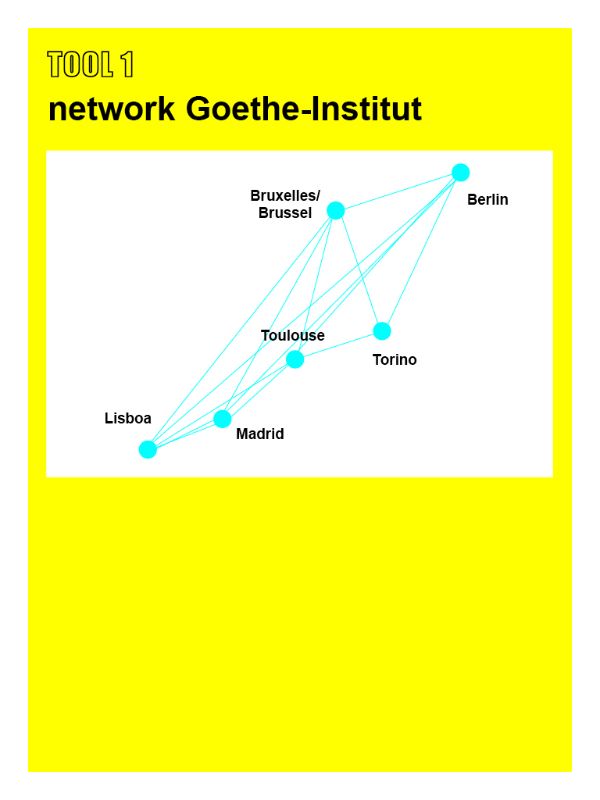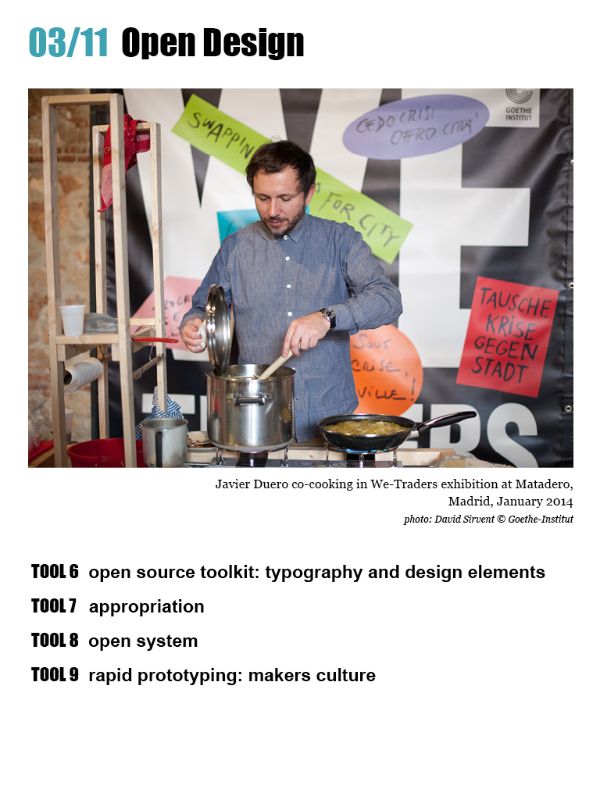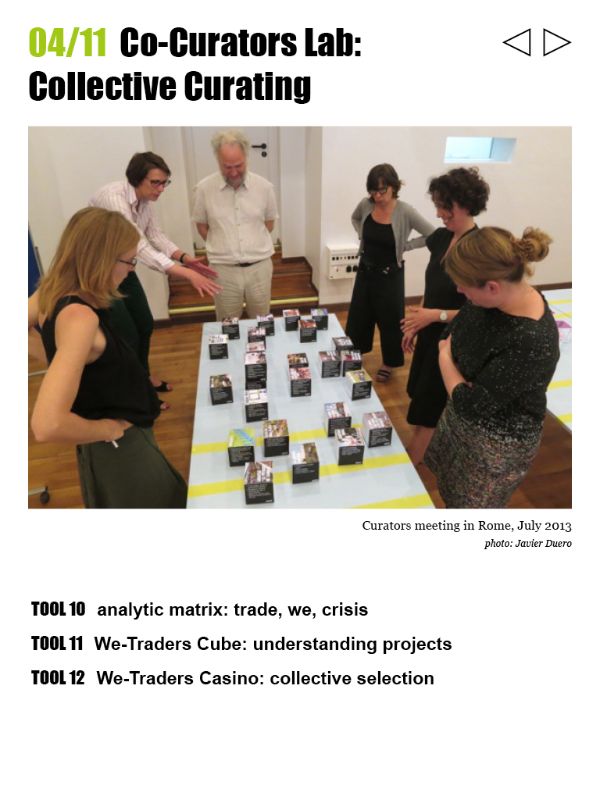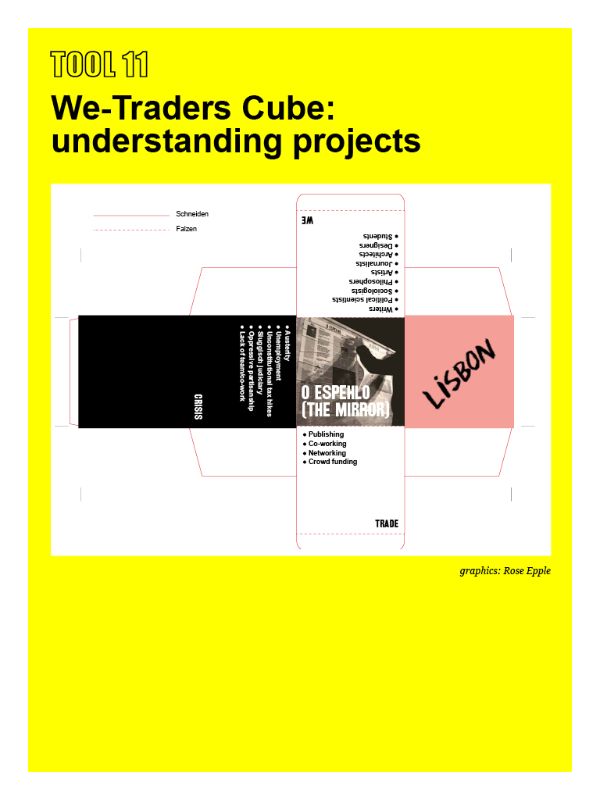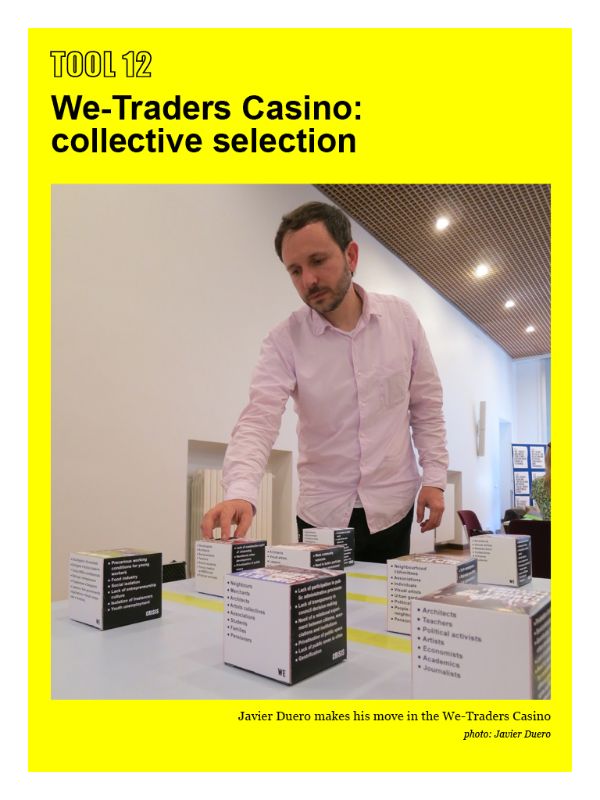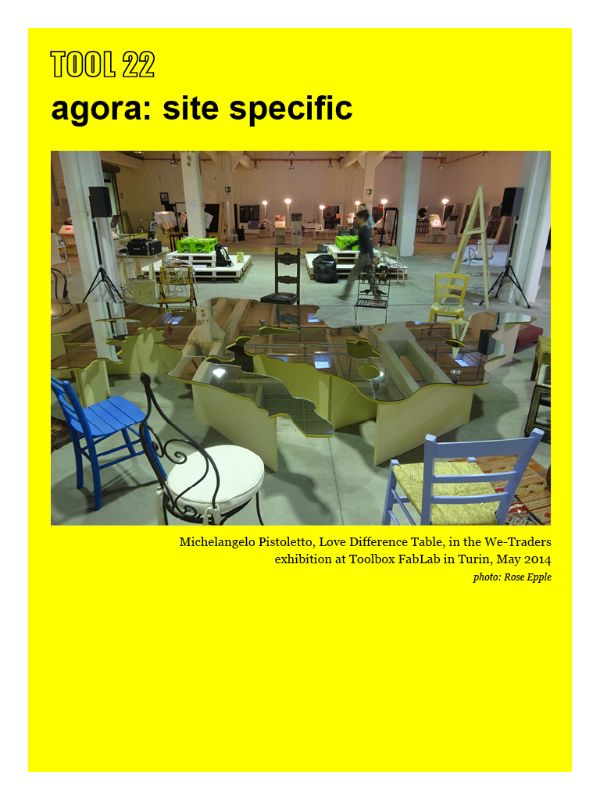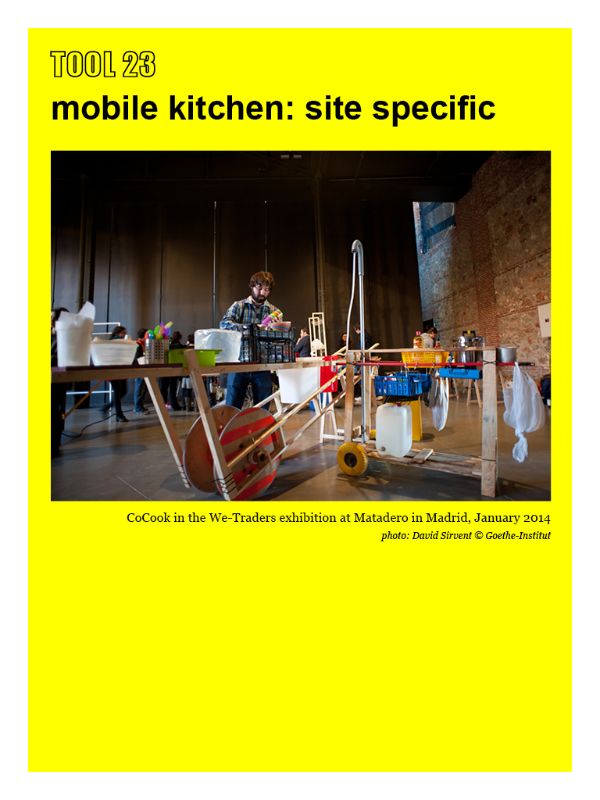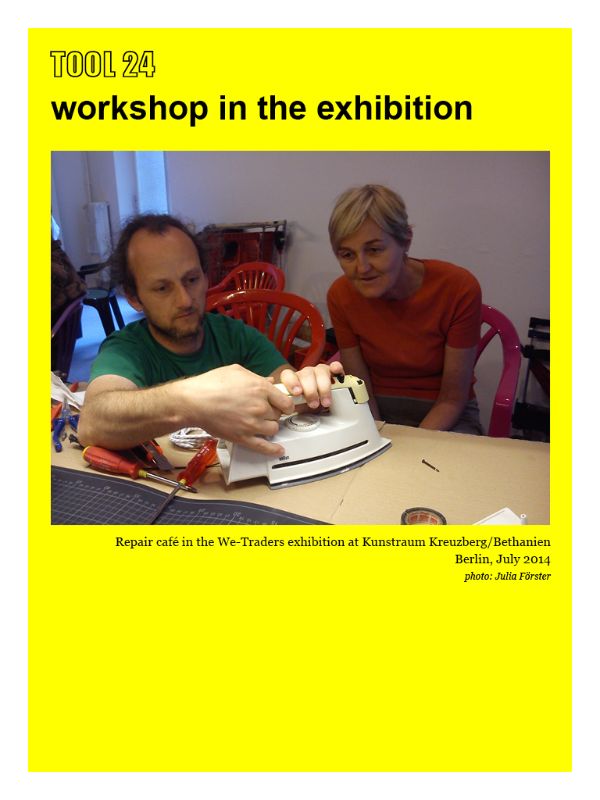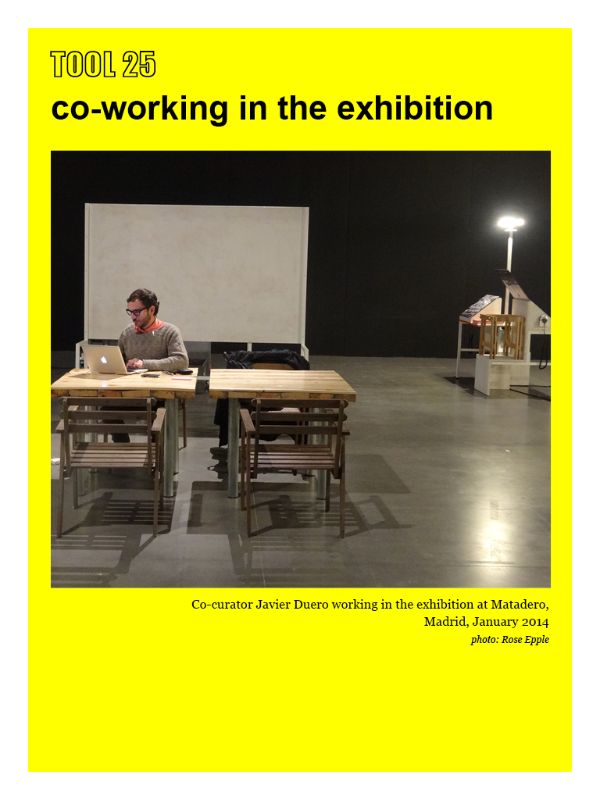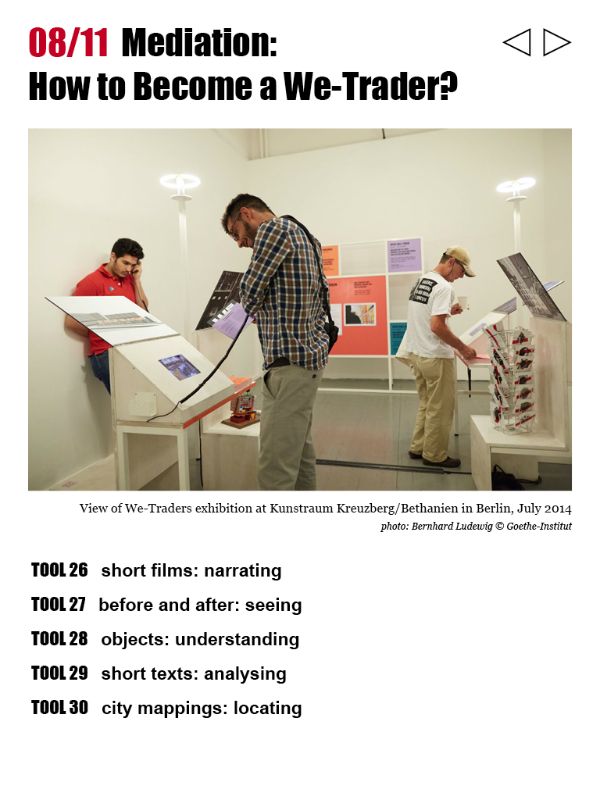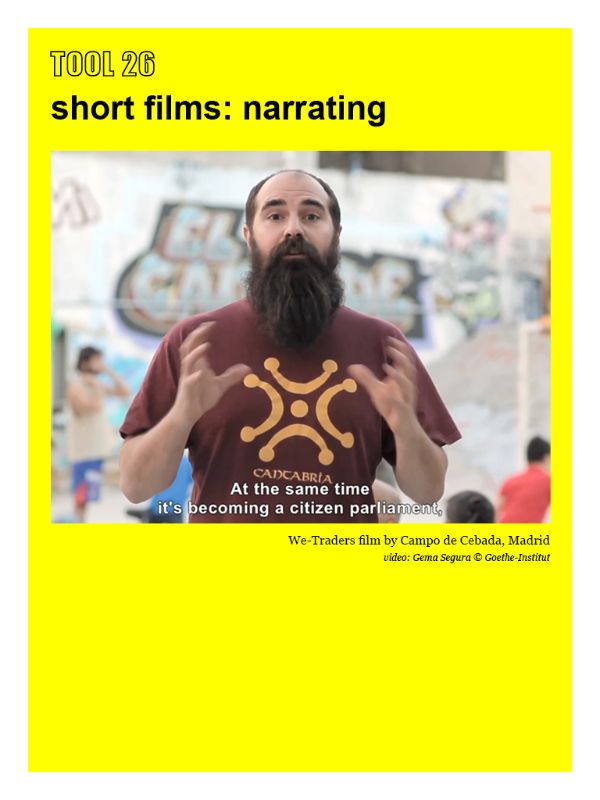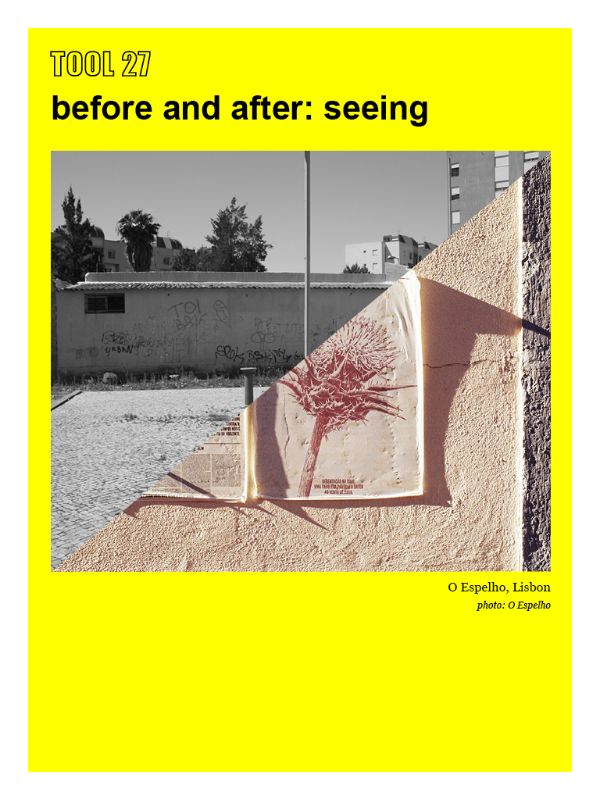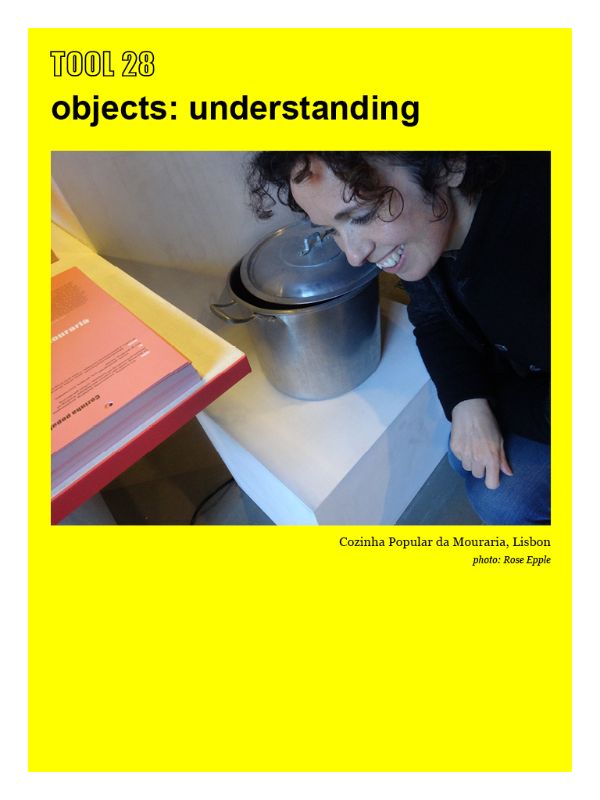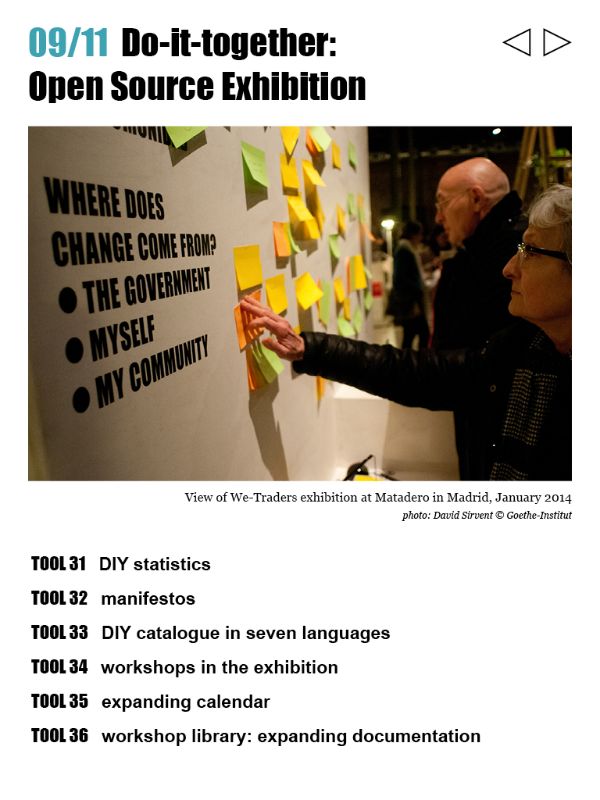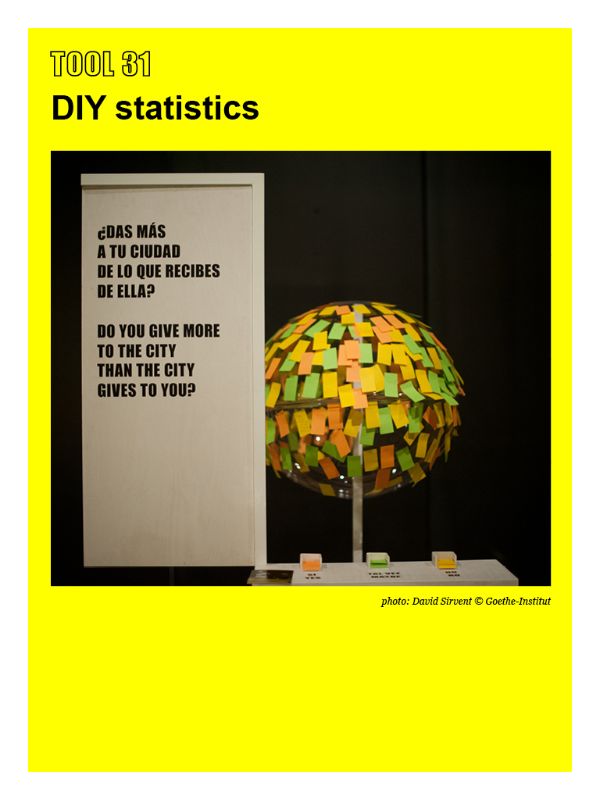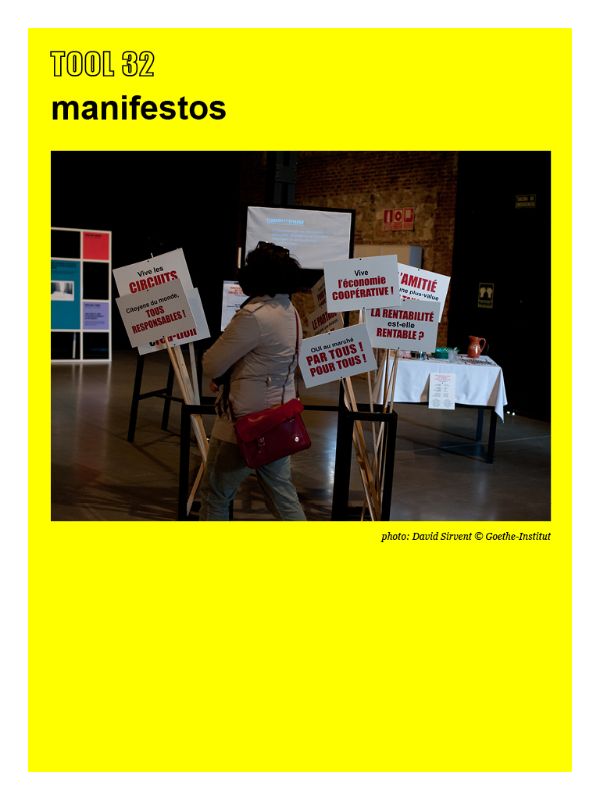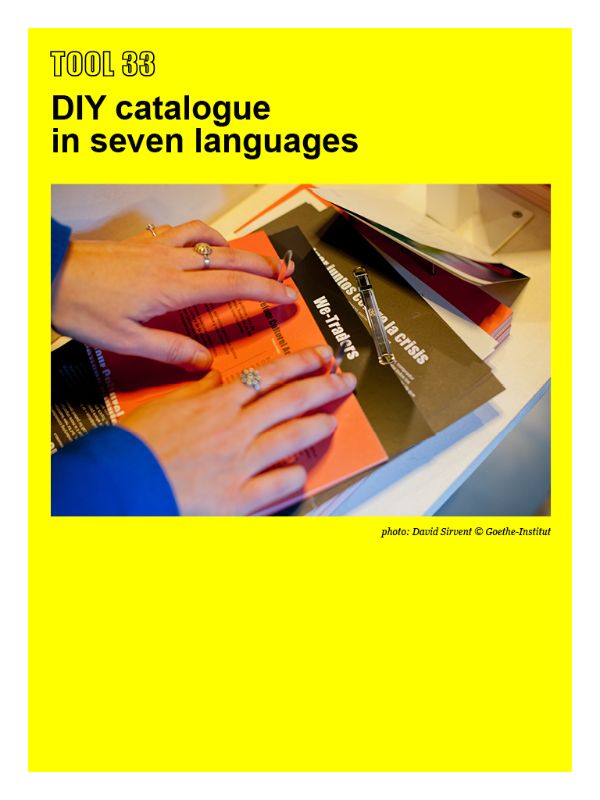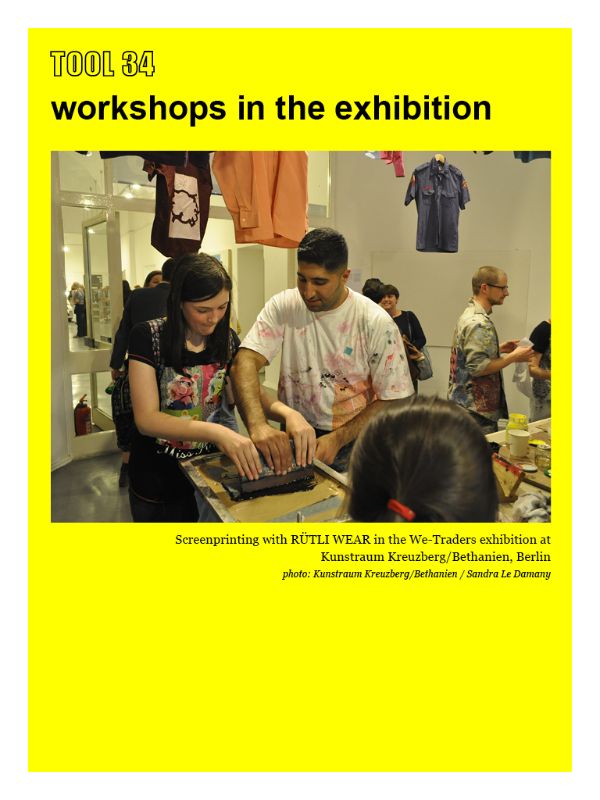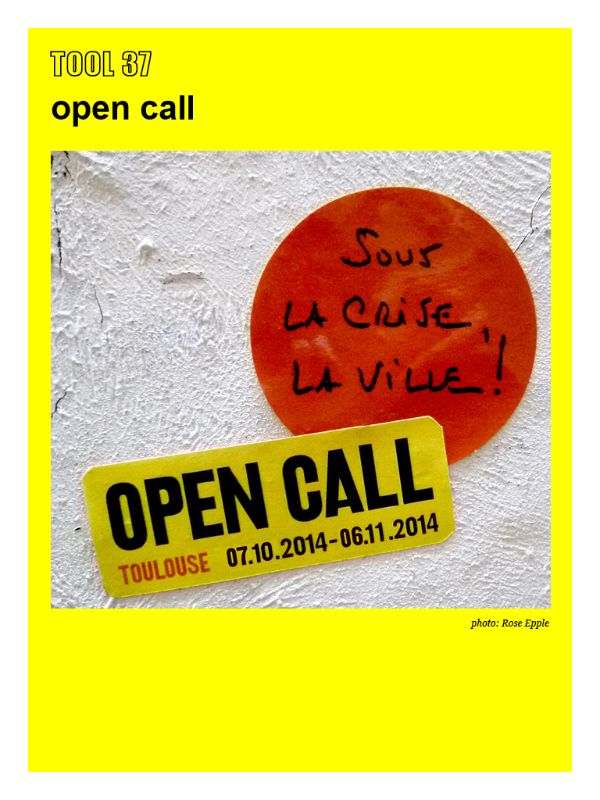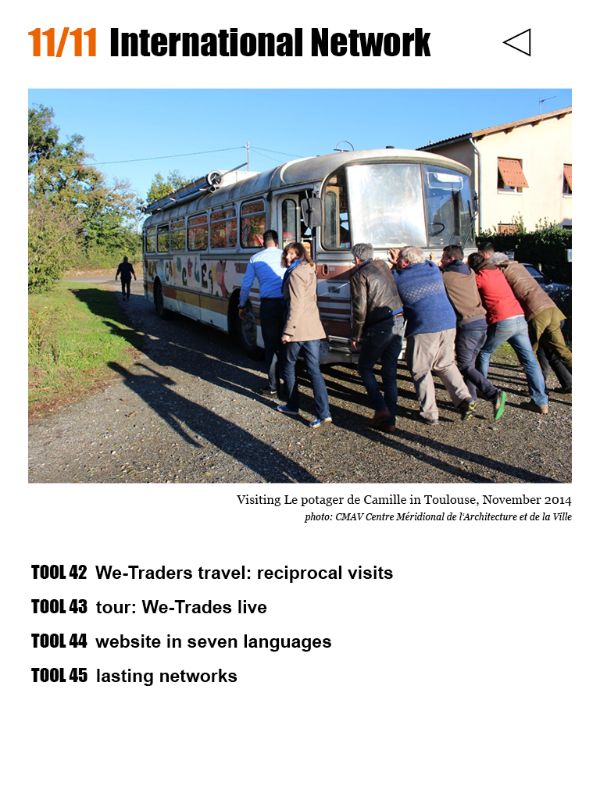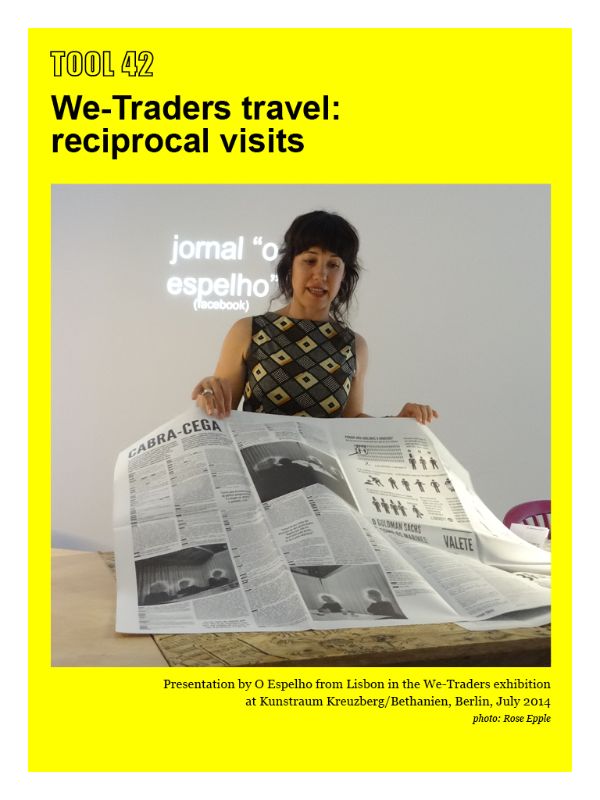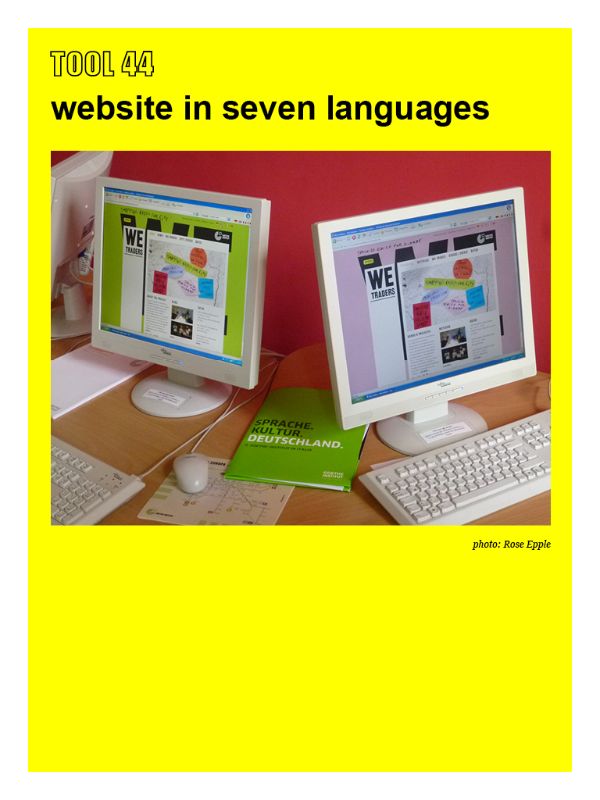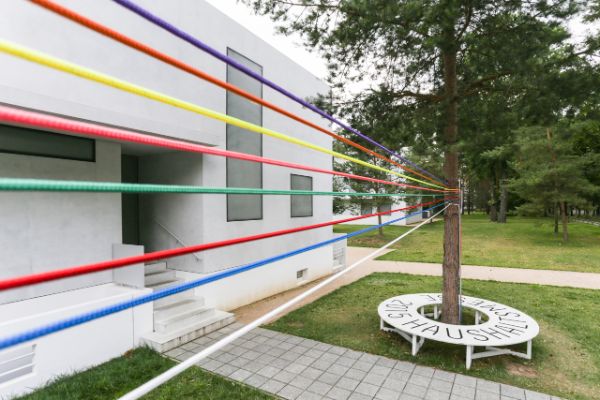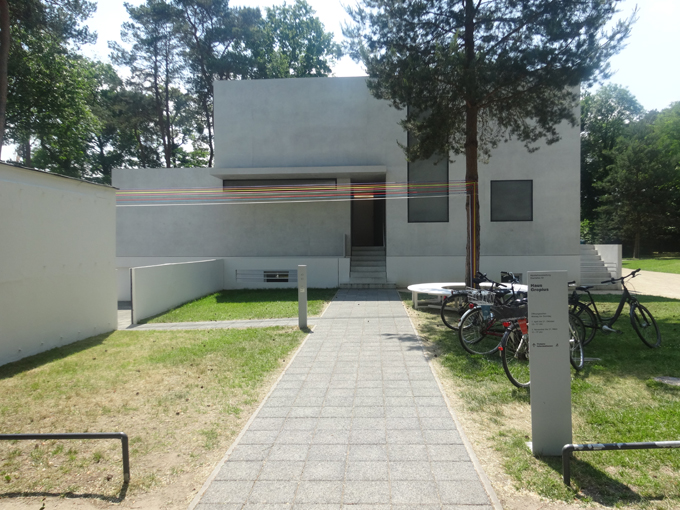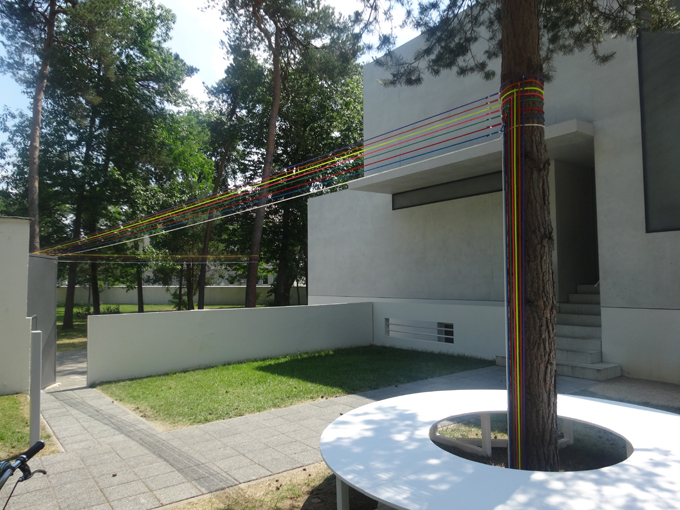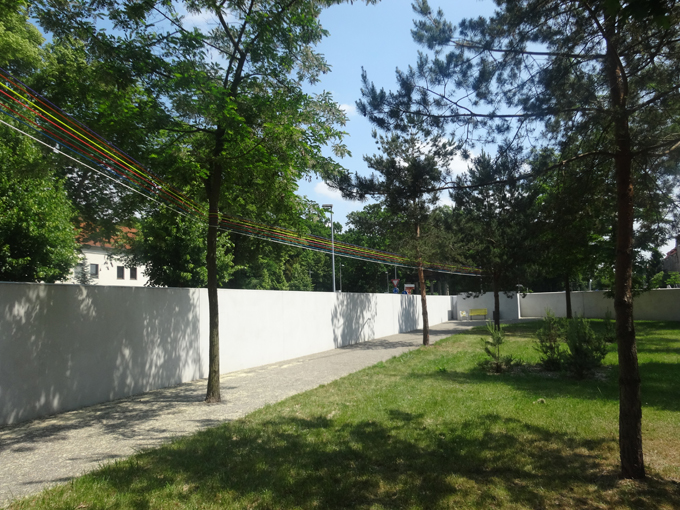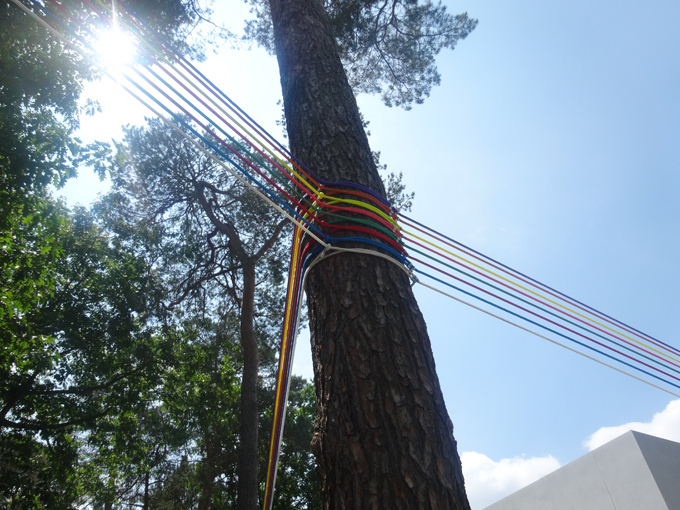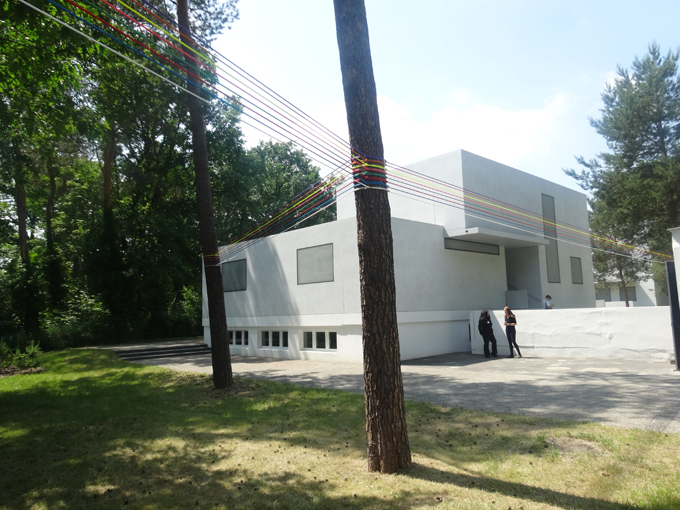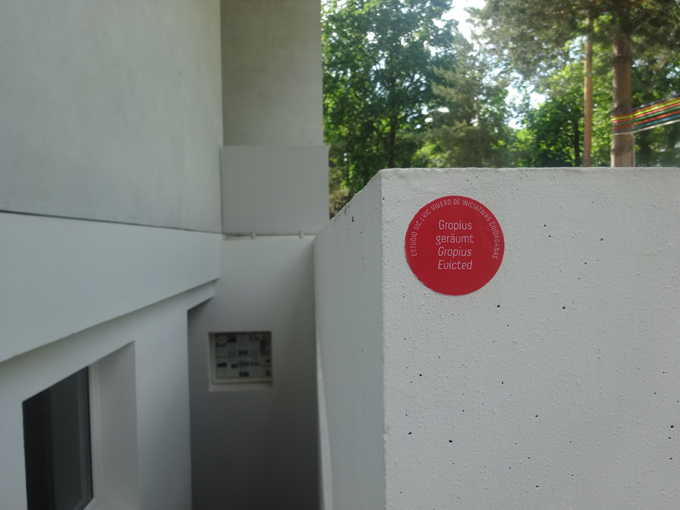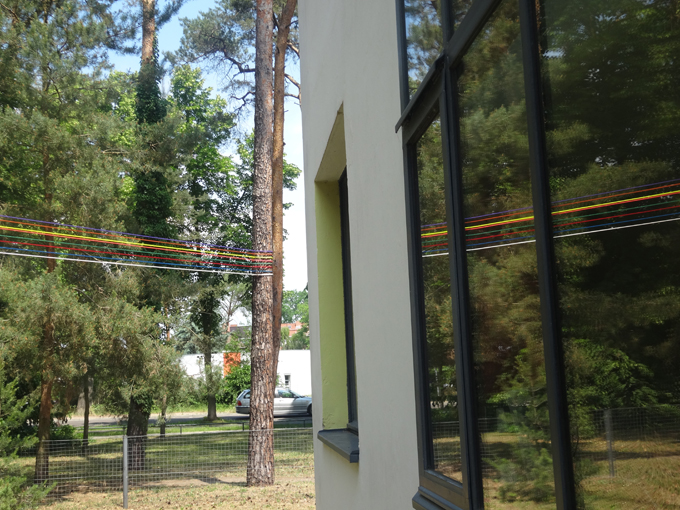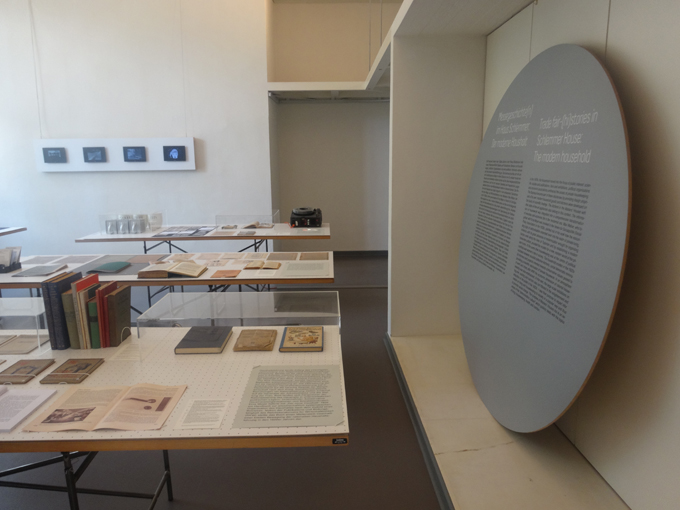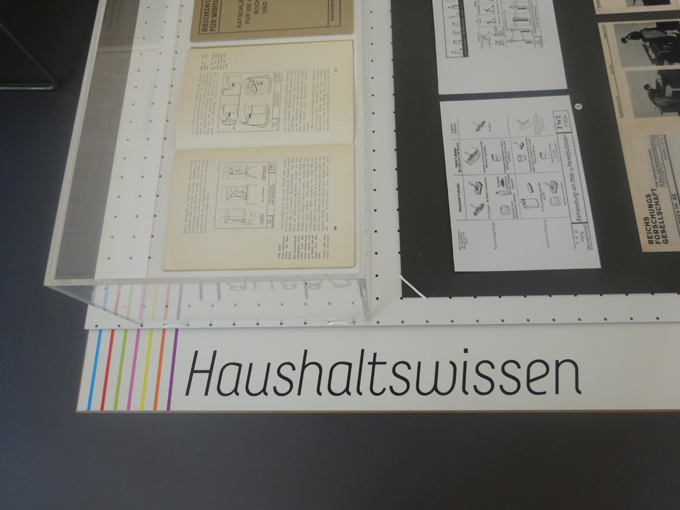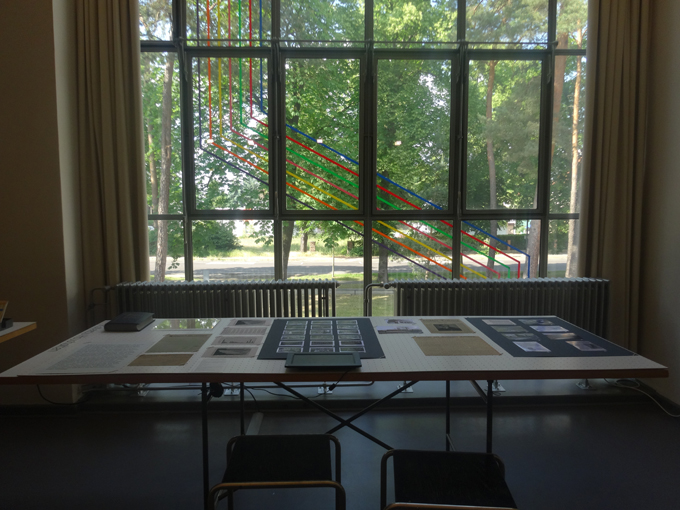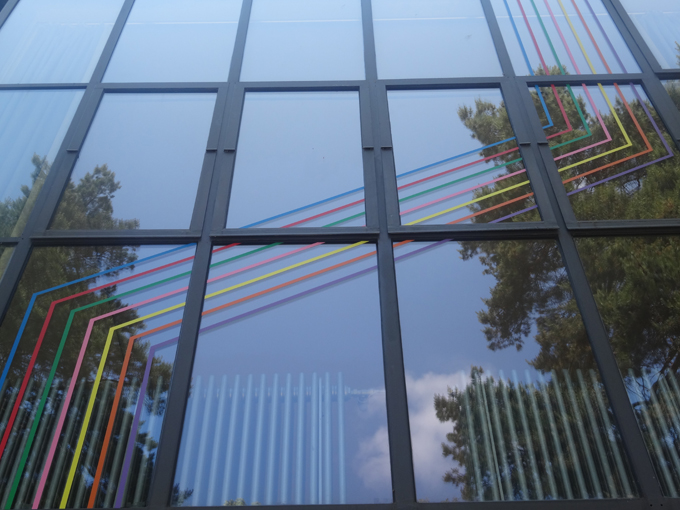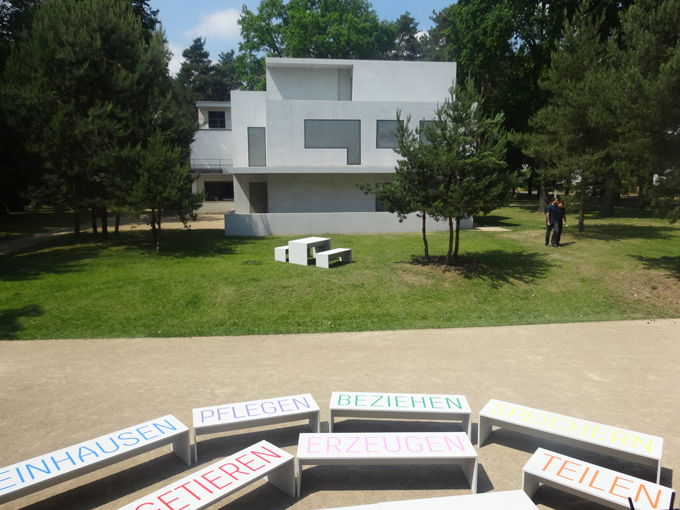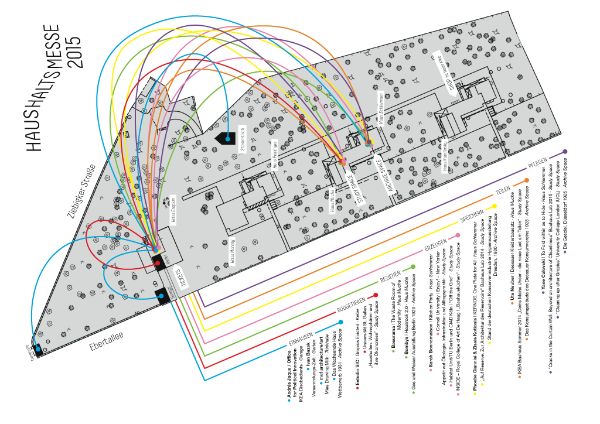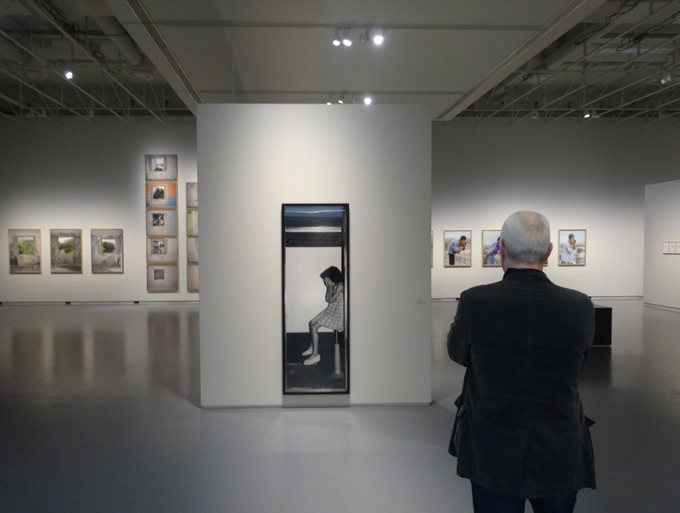The Werkbundarchiv – Museum of Things and guest curator Ece Pazarbaşı invited its neighbours to select “unknown” objects in their vast collection and collectively assemble this exhibition of 65 enigmatic things. They serve as talking points to participants and visitors alike, with the aim to collectively generate a pool of knowledge that goes beyond the conventional museum wisdom. Come and share your knowledge as well until September 25, 2017. Continue reading “Cabinet of the Unknown”
Author: Rose Epple
How Do You Live?
At the Museum of Things, we hosted students of Jens-Nydahl Primary School in Berlin Kreuzberg for a jolly project week. Twenty-one kids from age six to eleven drew floor plans, furnished apartments, designed wallpaper and built dream homes. Best of all – they turned our white cubes into very colourful ones! Here are some impressions of a busy week in the D.I.Y. Home Advice Centre: Continue reading “How Do You Live?”
Would You Like It Modern?
The exhibition gern modern? Living concepts for Berlin after 1945 at the Museum der Dinge charted ideas and initiatives of the German Werkbund in the aftermath of WWII.
Hausbesuch
Hausbesuch – home visit – is the name of an European project initiated by the Goethe-Institut. Over a period of 7 months, 10 renowned authors from 10 European countries travelled to 17 European cities and visited 40 private homes. The writers came to eat, drink, read and enter into discussions with their hosts and subsequently reflect on their experiences. Their accounts have now been published by Berlin based e-book publishers Frohmann Verlag. Continue reading “Hausbesuch”
Merry Christ-Mess
Every year on December 1, I climb up to the attic and bring down the Christmas scrapbooks. Continue reading “Merry Christ-Mess”
Easy Language
As many Berlin expats can confirm, German is not an easy language to learn, due to its complicated grammar. What if you simplified the language in order for it to be understood by more people? This is a personal essay about my experiences with the concept of `easy language´ and the controversy it is causing in Germany. Continue reading “Easy Language”
Design Thinking Kids Club
What would a school look like if young people and children were designing it? That is what we were trying to find out in this project. For a whole term, I was working with students of the Berlin Bilingual Secondary School in our Design-Thinking-Kids-Club on making their school an even better place.
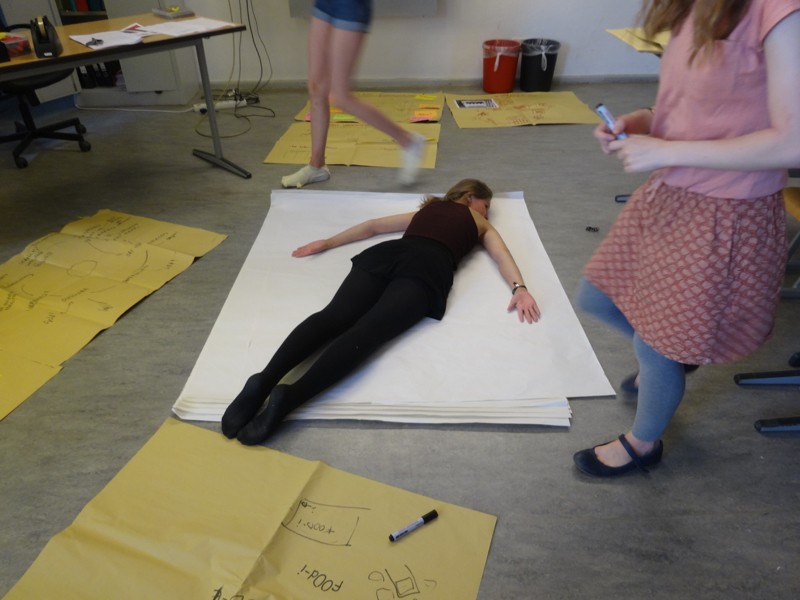
The Club aimed to raise the creative confidence of its members and teach them tools to enable them to shape their surroundings. Not only because this is useful for their future, but also because we were curious about their ideas.
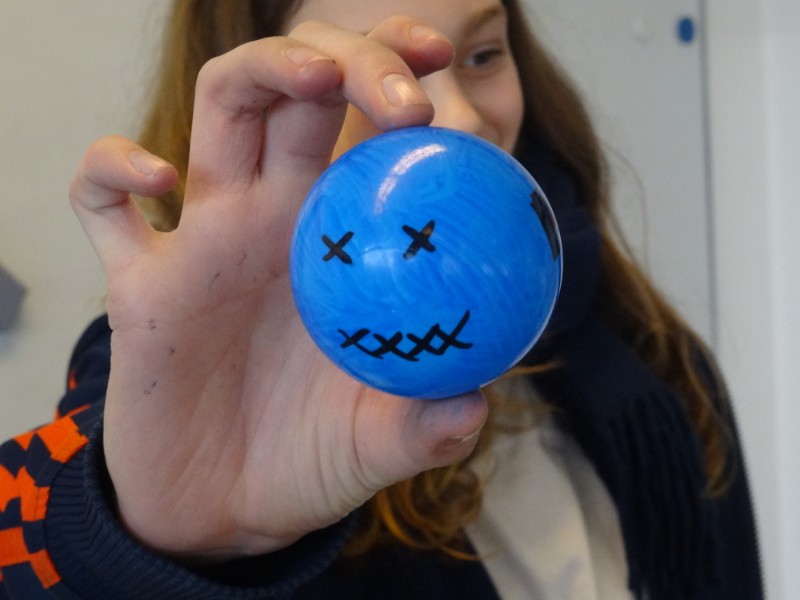
Based loosely on Design Thinking methods, the open process steered towards a goal decided on by the students. My role consisted of structuring the design process and moving it towards atangible result. The activities of the club were documented in detail on the project website www.design-thinking-kids.de (in German).
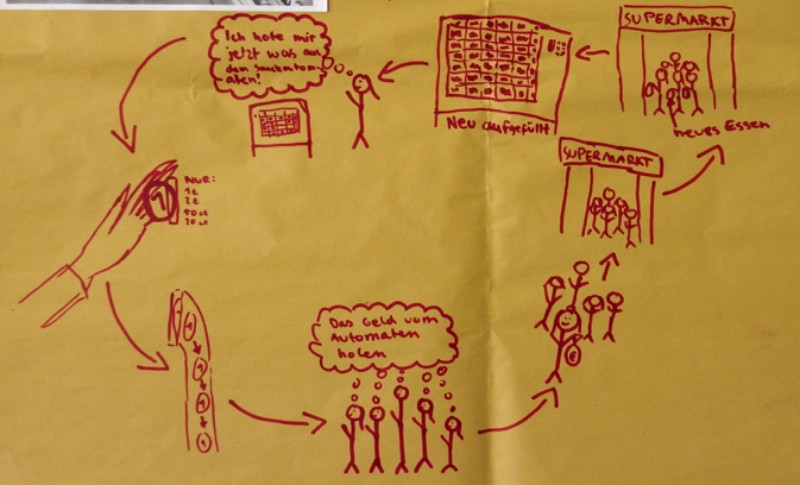
How can we improve daily life at our bilingual secondary school? The students of year eight and nine edged their way towards answers with practical exercises in weekly workshops. After intensive field studies, the students defined their own challenge: How can we create and run a food dispenser in the school, so that students do not go hungry anymore? And how can we make it useful for the whole school?
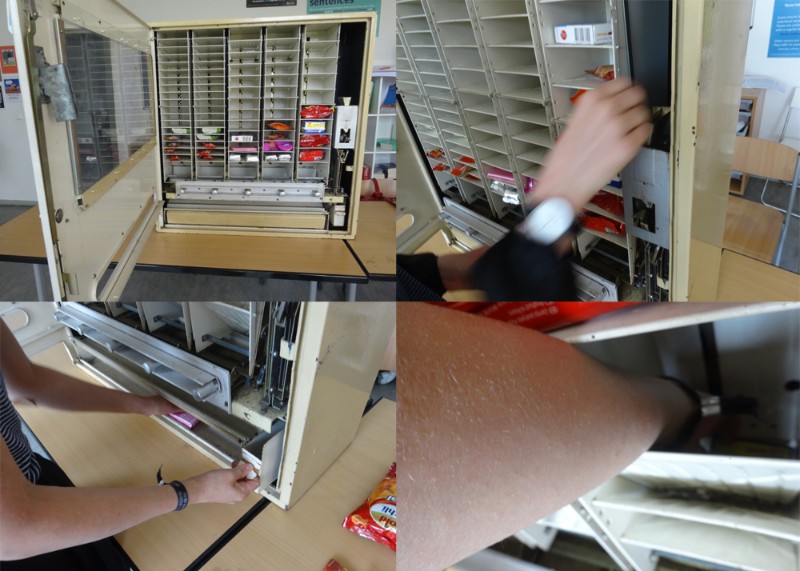
We bought an old dispenser on Ebay and the students started cleaning it and testing what items would fit into it.
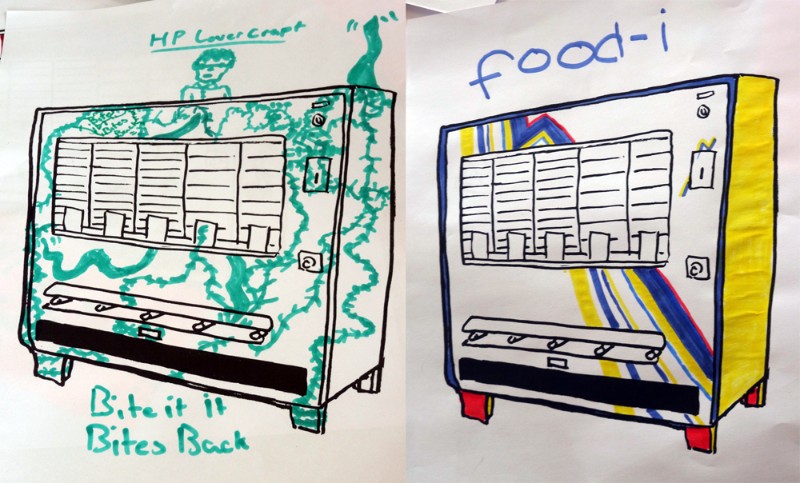
Then they worked on designing the appearance of the automat and came up with a name for it.
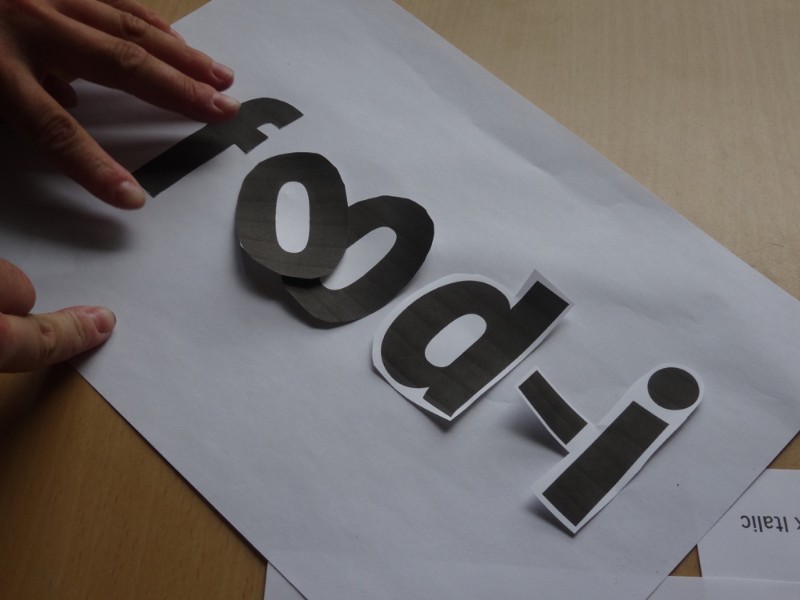
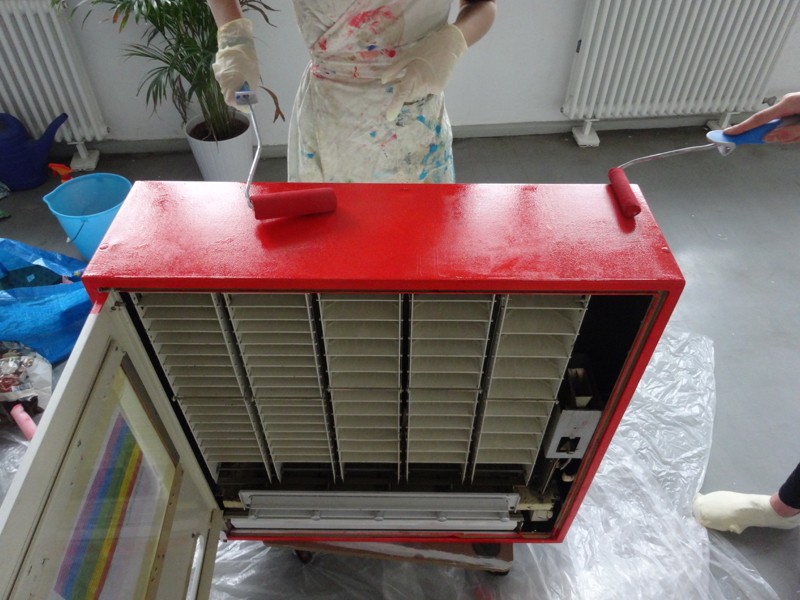
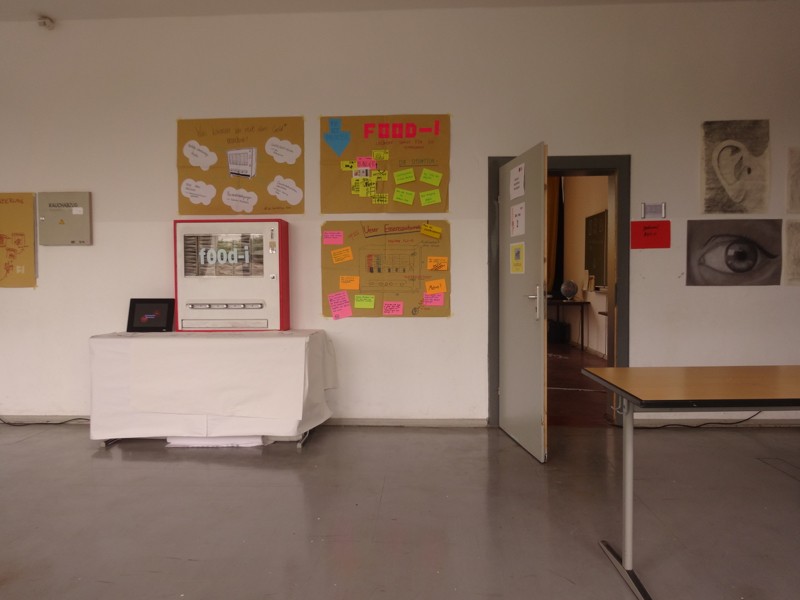
The outcome of their work is called fOOd-i, a food dispenser and service based community tool for the school.
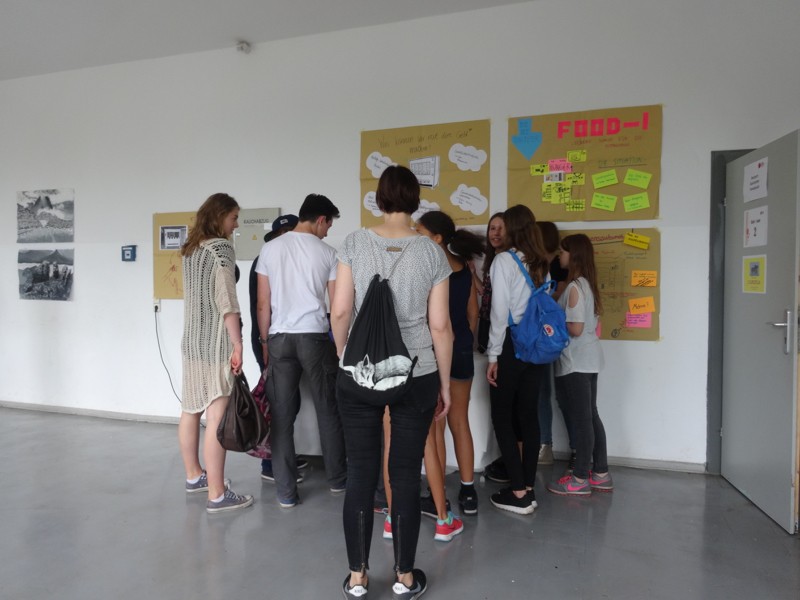
At the end of term, fOOd-i was presented to the general public at the annual Summer party to great acclaim.
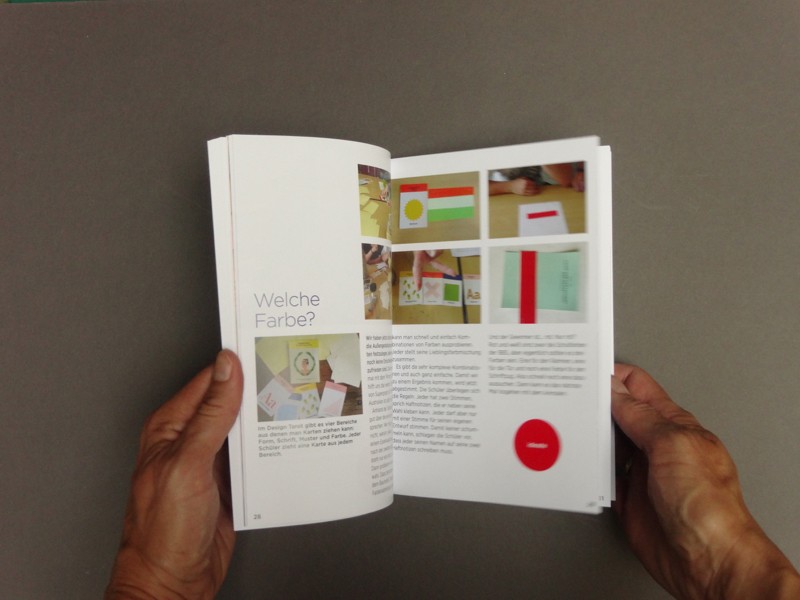
The Design Thinking Kids booklet charts the ups, downs and outcome of working with students from grades eight and nine on a challenge of their own choosing. If you are interested in the booklet (in German), you can order in on my DESiGN KiDS website. For more details on the individual sessions visit the Club’s website www.design-thinking-kids.de.
The Design-Thinking-Kids Club took place at the Berlin Bilingual Secondary School in the Summerterm 2016 and was funded by the Berliner Projektfonds Kulturelle Bildung.
Concept, project management, workshops and photos by Rose Epple.
Graphic Design in the GDR
Back from holiday, I was excited to find the new Eye Magazine in my post box – with my review of the exhibition “Masse und Klasse: Graphic Design in the GDR” on page 86. If you are in Berlin and have not seen the exhibition, you still have until August 29, 2016 to visit the Werkbundarchiv – Museum of Things and catch a glimpse of the everyday visual culture of East Germany. The finissage will take place on Saturday 27 with an expert talk about GDR records. See you there?
We-Traders E-Book
We-Traders – Swapping Crisis for City is an exhibition project of the Goethe-Institut that gathered 30 activists promoting urban change in Madrid, Lisbon, Turin, Toulouse, Berlin and Brussels from 2012 until 2015. You can read more about the We-Traders platform, that I co-curated with Angelika Fitz in this post.
To mark the end of the process, we teamed up with Vienna urban research publishers dérive and produced this e-book. It combines theory and practice of collaborative place-making and asks questions about this current urban culture’s potential for the future. You can download the free e-book We-Traders. Swapping Crisis for City from the website of the Goethe-Institut Brussels.
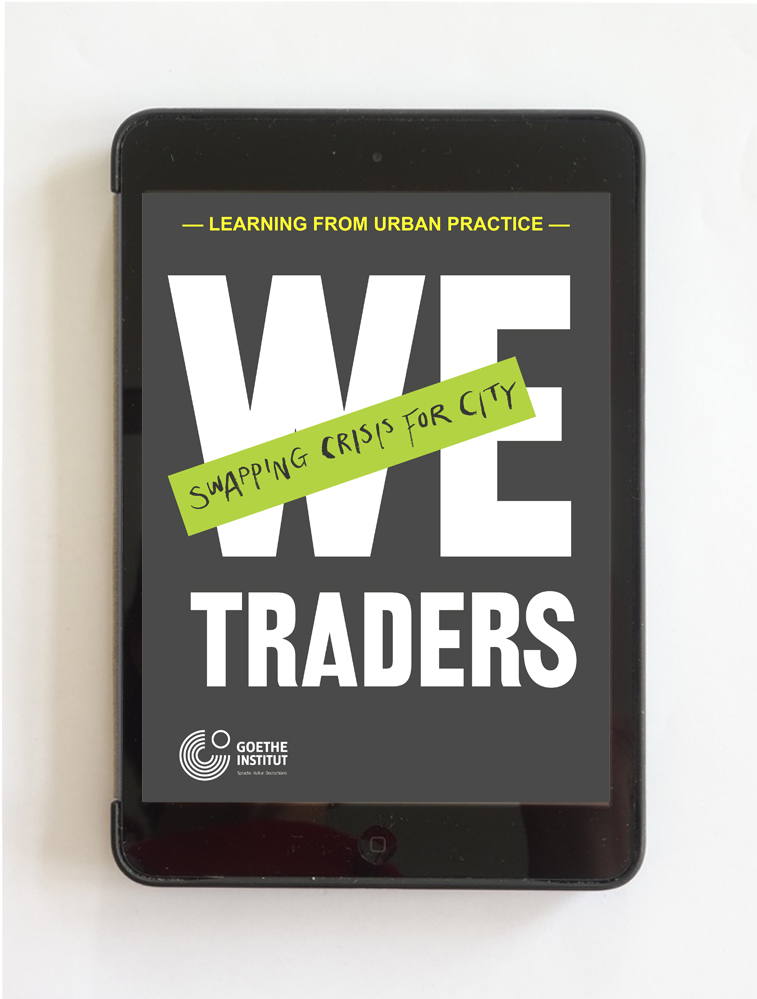
We-Traders. Swapping Crisis for City.
Learning from urban practice.
Publisher: Goethe-Institut e.V.
Co-publisher: Angelika Fitz and dérive – urban research
Concept, editing, production: Christoph Laimer, Elke Rauth / dérive
Design: Rose Apple
Programming: Scott Alexander, ringebooks.
With texts by: Julia Albani, Leonie Baumann, Sonja Beeck, Santiago Eraso Beloki, Charlotte Bonduel, Javier Duero, Rose Epple, Angelika Fitz, Julia Förster, Alain Gatti, Stéphane Gruet, Frauke Hehl, Susanne Höhn, Rolf Novy-Huy, Common Josaphat, Elke Krasny, Jessica Kratz Magri, Christoph Laimer, Andreas Novy, Lisa Parola, Luisa Perlo, Elke Rauth, Marco Revelli, Matteo Robiglio, Stavros Stavrides, Chloé Viénot
We Want to See Everybody!
“We are starting an initiative to bring actors with disabilities into German film and television and we need a visual identity. Are you up for it?”– “Yes of course, I said, but only if I get to work with these actors in the process.”
Chapel for 30 Seconds
What are you afraid of? You had 30 seconds to ponder this existential question, while crossing the light tunnel over river Ill. The installation by Alex Valder and myself in picturesque Feldkirch was part of the Montforter Zwischentöne, an innovative music festival. The theme of that year’s edition was “Faith”.

Photo: Elias Keimer
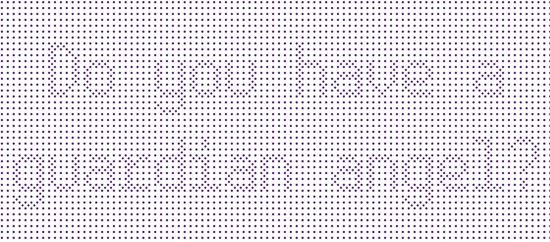


The questions mounted at either end of the bridge were changed every day to entertain regular users of the bridge as well as the one-time visitor from out of town. The closer you got to the questions, the less legible the letters became.
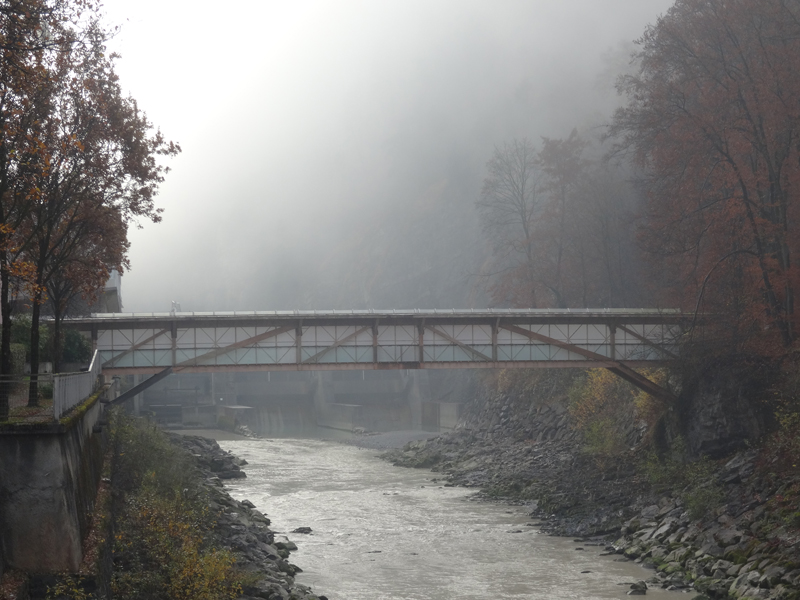
The bridge connects the town and the Montforthaus – the festival’s base – with the music academy on the other side of the river, which served as a venue for some festival acts.


Photo: Elias Keimer
In the early November nights the illuminated bridge showed visitors the way and signalled to the population that the festival was ‘on’.
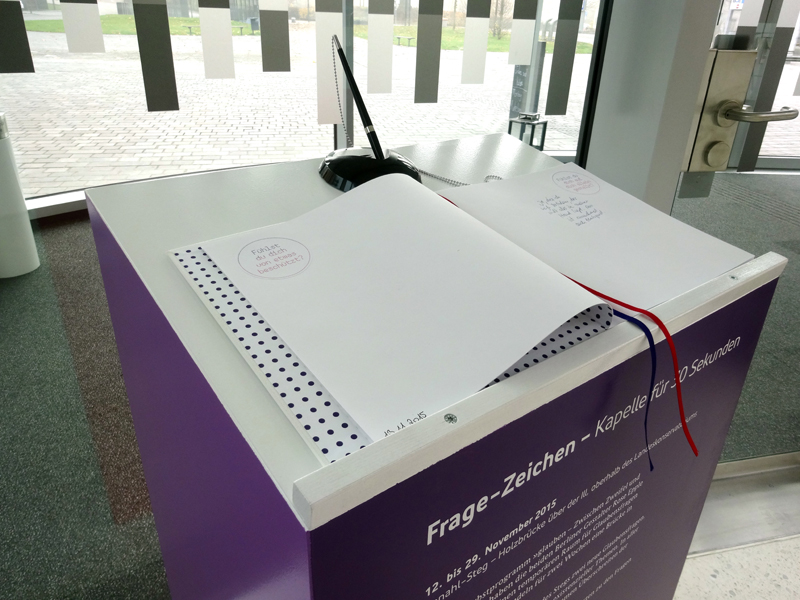
A visitors book in the Montforthaus invited you to share your answers, reflections or comments to the question of the day.
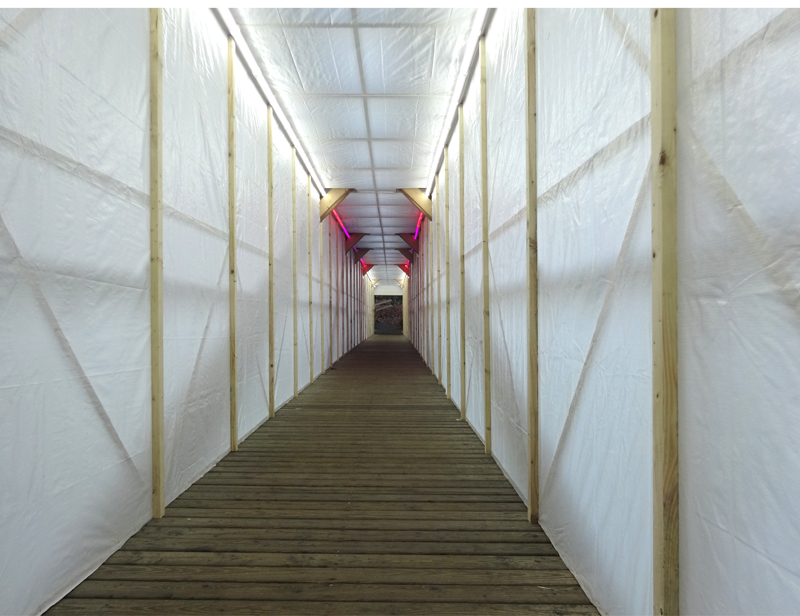
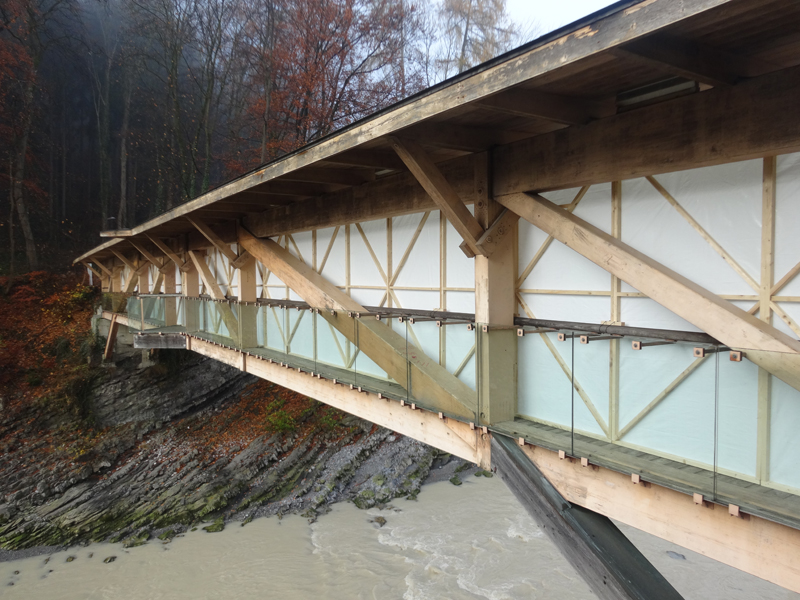
Frage-Zeichen. Kapelle für 30 Sekunden, an installation by Rose Epple and Alex Valder with the help of lighting expert Elias Keimer for the Montforter Zwischentöne from November 12-29, 2015. The festival is curated by Hans-Joachim Gögl and Folkert Uhde.
Title image © Darko Todorovic
Where to Study?
During my recent talk at Central Saint Martins College of Art & Design in London, I mentioned my sense of wonder and liberation when I came to study there. “I am feeling the same”, a young German student told me after the lecture. Like me, she had come on a scholarship and had already experienced a few years of German design education. Like me, she was dreading to go back. So what is it that makes British design education for people like me so different, so appealing?
We-Traders
They are active in Lisbon, Madrid, Toulouse, Turin, Berlin and Brussels: Citizens across Europe are currently taking the initiative to re-appropriate urban space. We call them “We-Traders” in the sense that they redefine the relation between value, profit and public good and are able to motivate fellow citizens to follow suit. The We-Traders platform initiated by the Goethe-Institut, and developed with brilliant Vienna based curator/author Angelika Fitz and myself, connects initiatives by artists, designers, activists and many other citizens from six distinct European contexts.
Collective Exhibition Making
The We-Traders exhibition is, similar to the projects it is showing and connecting, an experiment in co-creating a social situation. The collaborative process that shaped We-Traders took place in Berlin, Brussels, Lisbon, Madrid, Munich, Rome, Toulouse and Turin over a period of two years. Next to us, as artistic directors and the project lead in Brussels, six local Goethe-Instituts, seven co-curators and 30 We-Trader projects were involved. As milestones of this collective effort we count the Co-Curators Lab in Rome July 2013 and four We-Traders Fora in Autumn 2013. During the We-Traders tour that started January 2014 in Madrid and ended March 2015 in Brussels, the exhibition went on being not only a space of presentation, but a space to meet and co-produce with more than 30,000 visitors. The Tool Story presents our collection of tools we used, adapted and invented in the process and is published in full in the We-Traders E-Book.

The Working Exhibition – A Tool Story in 11 Images: Angelika Fitz, Rose Epple
We-Traders Platform:
Project direction Goethe-Institut Brussels: Susanne Höhn
Project coordination: Julia Förster
Co-Production: Goethe-Institute Lisbon, Madrid, Toulouse, Turin, Brussels
Concept und artistic direction: Angelika Fitz, Rose Epple
Co-Curators: Julia Albani (Lisabon), Javier Duero (Madrid), Stéphane Gruet (Toulouse), Lisa Parola & Luisa Perlo (Turin), Charlotte Bonduel & Julia Förster (Brussels)
Exhibition Design: Studio Alex Valder
Exhibition Graphics: Carsten Giese
Visual Identity: Rose Epple
Participating initiatives: A Linha (Lissabon), AERA Habitat (Toulouse), Agulha Num Palheiro (Lissabon), Allmende-Kontor (Berlin), betahaus/Open Design City (Berlin), BIP/ZIP (Lisbon), Bois & Cie (Toulouse), Buena Vista Social Housing (Turin), Campo de Cebada (Madrid), Casa del Quartiere (Turin), Carrefour Culturel Arnaud Bernard (Toulouse), Cozinha Popular da Mouraria (Lissabon), Elii/Crisis Cabinet of Political Fictions (Madrid), Il Piccolo Cinema (Turin), Initiative Möckernkiez (Berlin), Le potager de Camille (Toulouse), O Espelho (Lissabon), Miraorti (Turin), Mix’Art Myrys (Toulouse), RÜTLI-WEAR (Berlin), Todo por la praxis (Madrid), Toolbox Coworking/FabLab (Turin), [VIC] Citizen Initiatives Incubator (Madrid), Teamlabs/Walkinn Coop (Madrid)
Diagnoses by: Sonja Beeck, Paul Blanquart, Rolf Novy-Huy, Leonie Baumann, Santiago Eraso Beloki, Claus Leggewie, Jorge da Silva Macaísta Malheiros, Carlo Salone, Florian Schmidt, Marco Revelli
The We-Traders exhibition travelled to:
BOZAR, Brussels 2015
CMAV – Centre Méridional de l’Architecture et de la Ville, Toulouse 2014
LX Factory, Lisbon 2014
Toolbox, Turin 2014
Kunstraum Kreuzberg Bethanien, Berlin 2014
Matadero, Madrid 2014
Haushaltsmesse 2015
The masters’ houses in Dessau – built by Walter Gropius for the Bauhaus Masters in 1926 – were used as object lessons to promote Bauhaus ideas of modern living and household management. For the ‘Household Fair 2015‘ of the Bauhaus Dessau Foundation they serve as a point of departure for the investigation of contemporary housekeeping and budgeting issues. The fair comprises historic material as well as contemporary artistic positions and research on the household as a modus operandi ranging from the individual house to the entire world.
It was my pleasure to design the visual identity, signage and exhibition graphics for the Haushaltsmesse 2015.
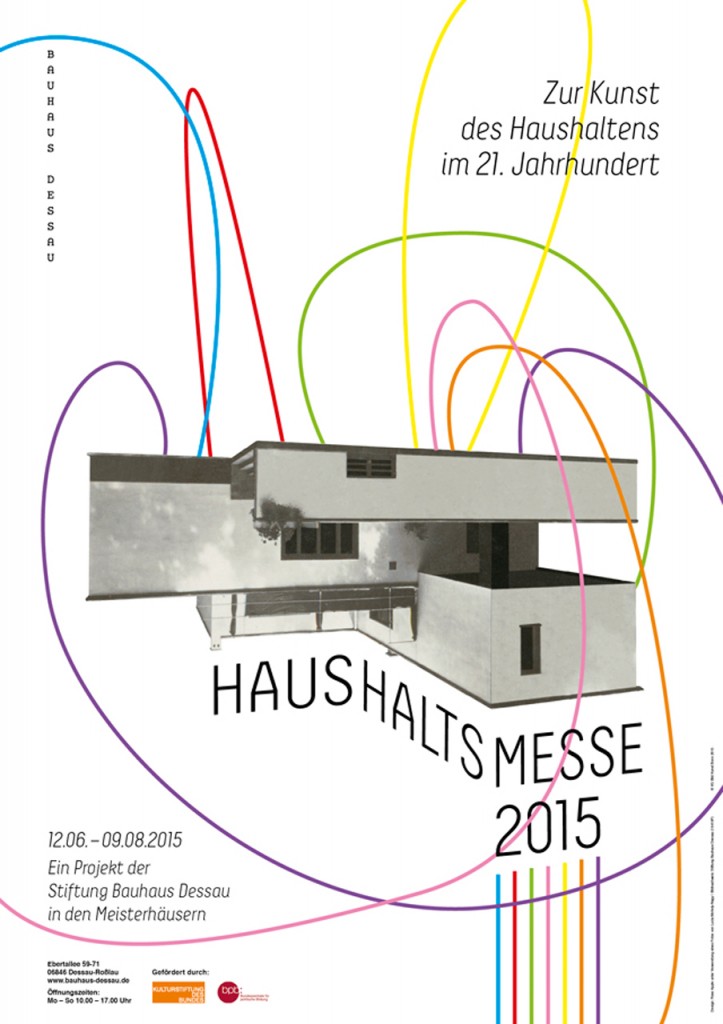
Haushaltsmesse 2015. The art of housekeeping and budgeting in the 21st century | A project of the Bauhaus Dessau Foundation in the masters´ houses from June 12 to August 9, 2015 | curators: Regina Bittner, Elke Krasny | project management: Katja Szymczak | design: Rose Apple with Wolfgang Schneider | For more information on the project click here.
All photos by Rose Epple unless otherwise indicated
With SINT LUKAS at Fotomuseum Antwerp
The Fotomuseum Antwerp is always aiming to further improve their visitors experience. For fresh input, they invited students from the Media and Information Design MA of Sint Lukas Brussels to explore new ways of engaging people with their collection. I had the pleasure of leading the two-day workshop on-site.
